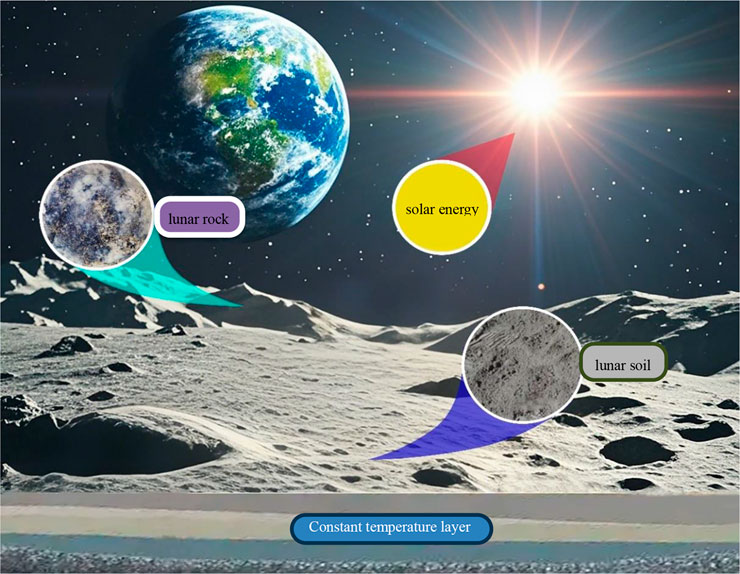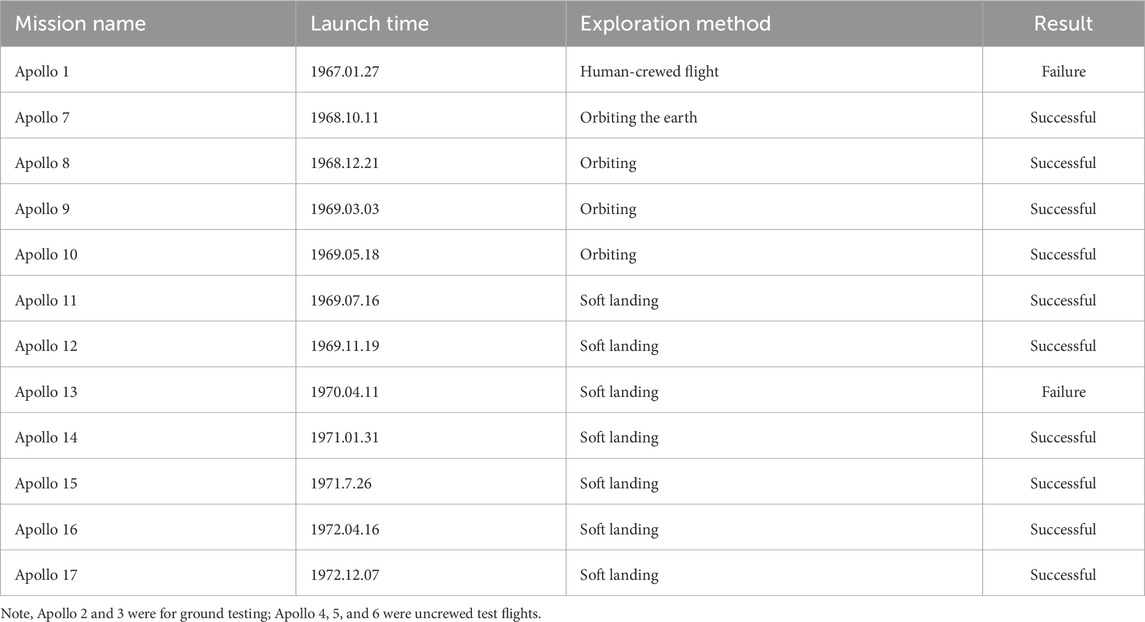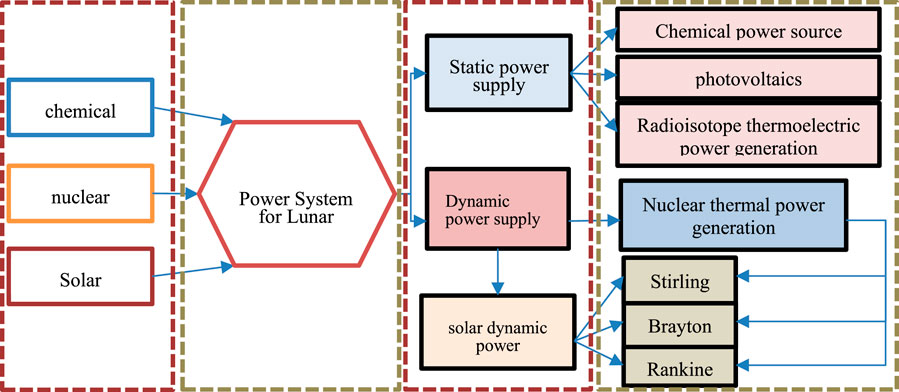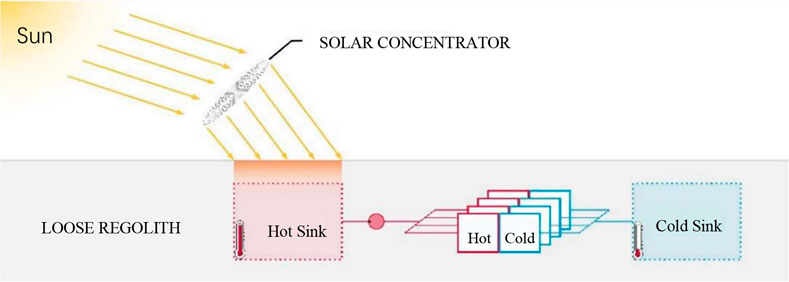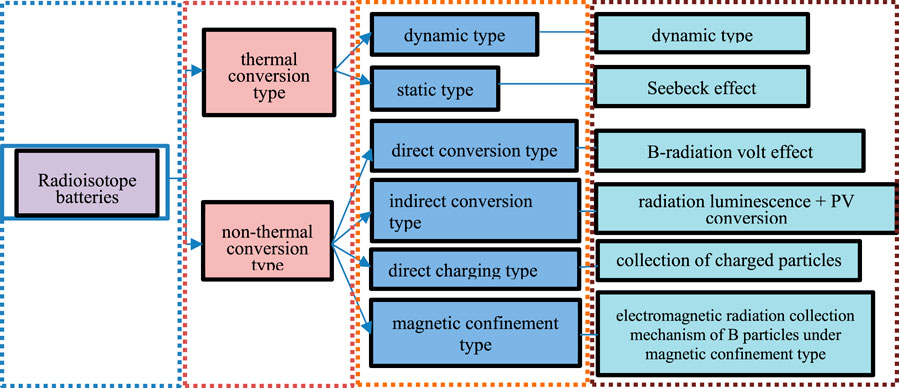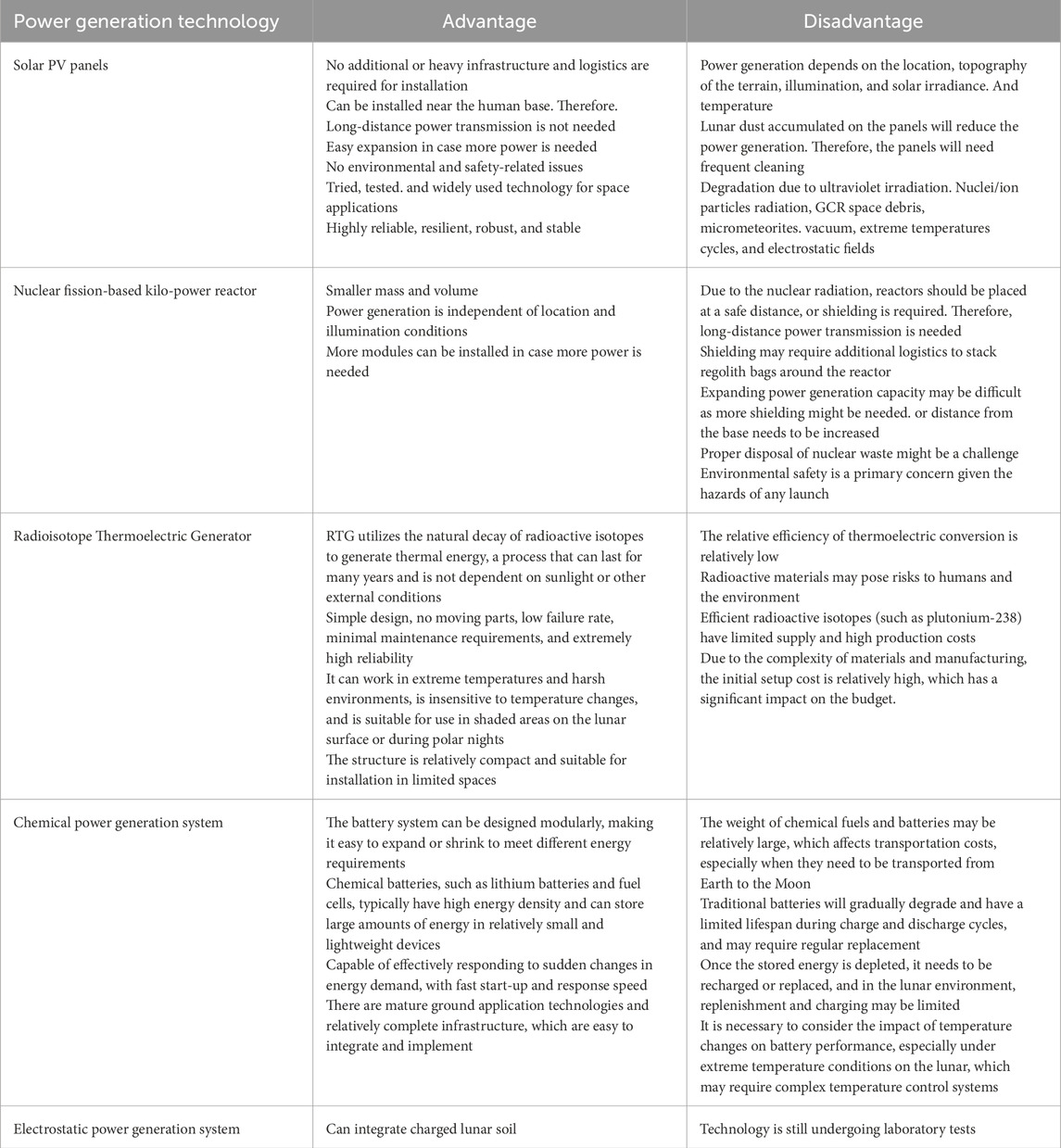- 1College of Mechatronics and Control Engineering, Shenzhen University, Shenzhen, China
- 2State Key Laboratory of Intelligent Construction and Healthy Operation and Maintenance of Deep Underground Engineering, Shenzhen University, Shenzhen, China
Since the 20th century, humanity has entered the era of deep - space exploration. The Moon, being close to Earth, is a key target. Building a lunar base is crucial for space exploration and resource use, but requires a reliable energy system. Existing lunar energy system plans usually concentrate on one or two techs and lack a full - scale analysis of long - term, stable, and adequate energy solutions. This review fills the gap. First, it analyzes lunar environmental conditions like extreme temperature swings, vacuum, and radiation. Then, it offers a detailed historical look at lunar exploration, emphasizing progress from Apollo, Luna, and Chang'E. Next, it delves into eight key lunar-base-suitable energy systems: photovoltaic, solar thermal, thermal, controlled nuclear fusion, nuclear fission reactors, radioisotope thermoelectric generators, fuel cells, and electrostatic power. It carefully weighs each system’s pros and cons regarding energy efficiency, environmental adaptability, and technological viability. Finally, it suggests a phased strategy, integrating different technologies for various base - building stages, aiming to provide a comprehensive framework for future lunar energy system design.
1 Introduction
With the dawn of the 21st century, the enthusiasm for lunar development has surged exponentially among the global community, propelling countries worldwide to hasten the pace of lunar exploration and development initiatives. Serving as a crucial outpost for delving into the depths of space, the construction of a lunar base holds undeniable strategic significance. In the wake of the iconic Apollo program of the United States and the Luna program of the former Soviet Union, space agencies in China, the United States, the European Union, Japan, India, and other nations have embarked on a new wave of lunar exploration programs. The primary focus of most of these lunar exploration endeavors lies in targeting special substances such as lunar mineral resources, water resources, and volatile gases. This pursuit is driven by the aspiration to unravel the mysteries shrouding lunar evolution and life science, thereby laying a solid foundation for future human utilization and development of the Moon (Xie et al., 2020a). Undoubtedly, the energy system represents one of the most formidable challenges in the design of a lunar base. For any manned extraterrestrial outpost, a reliable and continuous supply of electric power is indispensable to operate a diverse array of thermal control and life support systems, thereby enabling human habitation in the otherwise inhospitable space or planetary environment (Liu et al., 2025).
The special environment of the moon has a significant impact on the construction of the energy system. First, the moon lacks an atmosphere and magnetic field, resulting in solar radiation and cosmic rays directly irradiating the surface, requiring the energy system to have strong radiation protection capabilities. Secondly, the temperature difference between day and night on the moon is extremely large, reaching 127°C during the day and dropping to −183°C at night (Heiken et al., 1991), which poses a severe challenge to the material and stability of the energy system. In addition, the gravity of the moon is only one-sixth of that of the earth, which poses special requirements for the structural design and stability of the energy system. Finally, the surface of the moon is covered with a large amount of fine dust, which is easy to adhere to solar panels and other equipment, affecting its power generation efficiency. Therefore, the energy system needs to consider dust protection and cleaning mechanisms. Therefore, the extreme environment of the moon poses special requirements for the design, material selection, and protective measures of the energy system.
The operation of lunar landers, rovers, and other equipment demands a substantial amount of energy. Currently, their energy supply mechanisms are designed to be “self-sufficient” (Deng et al., 2012). During the lunar day, efficient solar panels and batteries are deployed to meet the energy requirements of various lunar-based equipment. As night falls on the Moon, the built-in energy power devices, such as radioisotope batteries, come into play to power a select few essential equipment, while the non-essential ones enter a “sleep” mode. The energy supply device conserves energy by providing only the necessary insulation, resuming full operation when the lunar day returns. However, the existing monthly energy supply methods are marred by a short lifespan and limited power output, rendering them suitable only for small-scale lunar activities. With the continuous expansion of lunar exploration projects, relying solely on solar cells or small-scale radioisotope thermoelectric power generation will prove inadequate to meet the escalating energy demands of lunar exploration activities, especially those of lunar bases (Council et al., 2009). Although the research and exploration into lunar energy system construction have been relatively nascent, the past few decades have witnessed a plethora of significant scientific and technological experiments. These experiments, which encompass lunar-based nuclear power generation systems (Briggs et al., 2018), lunar-based solar power generation systems (Gläser et al., 2018; Criswell, 2004), and chemical power supply system. Such studies and experiments serve as vital references for assessing the feasibility of establishing energy systems on the moon.
In this comprehensive review, we present a detailed account of the lunar environment, including the vacuum environment, temperature conditions on the lunar surface and within the lunar soil, cosmic rays and solar radiation, micrometeoroid impacts, dust environment, and low-gravity environment. We also conduct an extensive review of the historical lunar exploration activities and the future of various countries in this regard. Subsequently, we meticulously analyze eight energy systems deemed suitable for lunar bases, namely Photovoltaic (PV) Power Generation System, Solar Thermal Power Generation System, Thermal Power Generation System, Controlled Nuclear Fusion Reactor Power, Nuclear fission reactor power supply, Radioisotope power Generation system, fuel cell system, and electrostatic power generation. The advantages and disadvantages of these energy systems are scrutinized in detail. Finally, we propose energy system combinations corresponding to the three stages of lunar base construction, with the aim of providing a guiding framework for the development of more reliable and efficient sampling devices and lunar base energy infrastructure. This review focuses on the technical feasibility and systemic integration of energy solutions, while economic considerations such as launch costs and ISRU-driven logistics will be addressed in future scenario-based studies. This study prioritizes the technical interoperability and environmental resilience of energy systems, whereas broader mission architecture aspects—such as launch economics, ISRU scalability, and maintenance logistics—are acknowledged as vital but reserved for subsequent phase-specific analyses.
2 Lunar environment
The Moon (Shown in Figure 1), Earth’s closest celestial neighbor in extraterrestrial space, holds a unique position in humanity’s exploration endeavors. With a minimum one-way communication delay of approximately 1.211 s and a maximum of 1.352 s from Earth, it allows for relatively real-time exploration through lunar probes. This proximity has enabled us to gain a more profound understanding of its environment compared to other celestial bodies (Hwu et al., 2008). However, despite being Earth’s sole natural satellite, the lunar environment diverges significantly from that of our home planet, rendering many terrestrial power systems inapplicable. For instance, the absence of wind and hydro resources on the Moon precludes the use of wind and hydro power generation systems that are commonplace on Earth. Consequently, an exhaustive study of the lunar environment is of paramount importance for the successful establishment of a lunar-based energy system.
2.1 Solar energy resources
The lunar surface, being approximately at the same distance from the Sun as the Earth, perceives a solar flux essentially as that in the Earth’s orbit, full energy spectrum including Ultraviolet and X-ray components (Roosendaal et al., 2020). The Moon has negligible magnetic field and atmosphere, its surface pressure ranges from 10 to 7 during the day and to 10–10 Pa at night. This means that the energy of sunlight shining on the surface of the moon is strong and unobstructed. It has long been known that there are highly illuminated regions (HIRs) near both the north and south poles of the Moon that are almost continuously in sunlight (Bussey et al., 2005). The small tilt of the Moon’s axis to the ecliptic plane (1.5° versus 23.5° for Earth) (Allen, 1973a) makes quasi-continuous illumination possible near the poles (Beer and Mädler, 1837). Near the poles the Sun moves around within a few degrees of the horizon, so local topography will determine how close to continuous the illumination of solar panels of a given height will be. In practice, the total area of the HIRs at ground level is small, of the order a few
2.2 Thermal environment resources
The thermal environment of the moon, also known as the temperature environment of the moon surface, is formed by a combination of multiple factors, including direct sunlight, reflection of the lunar surface, and infrared radiation from the lunar surface. During the lunar daytime, the direct radiation intensity of the sun can reach 1358 W/
During the period of 1971–1975 (Nagihara et al., 2018), Apollo 15 conducted tests on the soil temperature of the moon. The data showed that when the temperature probe was at depths of 0.35, 0.49, and 0.84 m, the temperature at these depths exhibited significant fluctuations over time. However, the degree of these fluctuations gradually decreased with increasing depth, indicating that although the impact of the alternation between day and night on temperature weakened with depth; After the depth of the temperature detector reaches 0.91 m, the alternating changes of day and night have little effect on the temperature at that depth, and the temperature can be considered to remain constant over time. The data (Shown in Figure 2) from the Apollo 17 temperature probe further indicates that when the depth of the temperature probe exceeds 1.3 m, the formation temperature will remain constant at −16 to −17.5°C, with a fluctuation range of less than 2°C. In summary, due to the extremely low thermal conductivity of lunar soil and rocks, it can be considered that when the burial depth of lunar soil and rocks exceeds 1 m, the temperature of the formation remains constant regardless of whether it is during the day or night of the moon, and can be regarded as a constant temperature layer (the temperature of the constant temperature layer varies with the latitude of the lunar) (Heping et al., 2020).
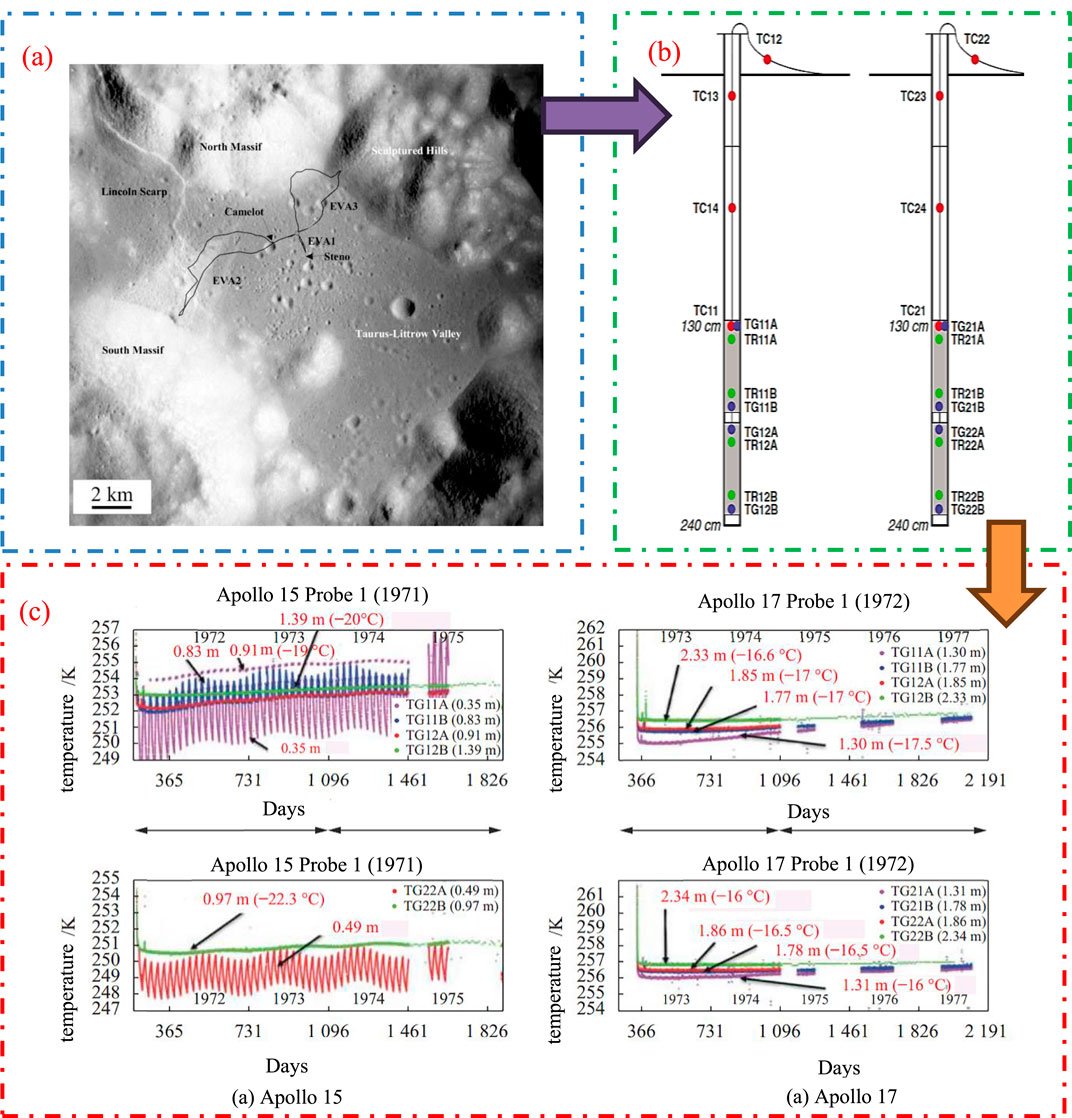
Figure 2. (a) The landing of Apollo17 (Hill et al., 2007) (b) Schematic diagram of measuring thermal properties of lunar regolith and rock by Apollo (c) The variation of temperature measured by Apollo 15 and 17 with probe depth (Nagihara et al., 2018).
2.3 Gravity, radiation, and micrometeoroid
The volume of the moon is only 1/49 of that of Earth, and the gravity is only 1/6 (Ouyang, 2005). The Moon perceives many types of ionizing radiation: large fluxes of low-energy solar-wind particles, smaller fluxes of high-energy galactic cosmic rays (GCR), and rare but occasionally intense particle fluxes emitted by solar flares or solar cosmic rays (SCR). Most observations about lunar radiation are a collection of measurements collected by instruments on spacecraft beyond the Earth’s magnetosphere; these observations are representative of what impinges the Moon. Annually the Moon receives about 106 kg of interplanetary micrometeoroids (ranging from 10 nm to about 1 mm in size) at impact speeds of 10∼72 km/s (Grün et al., 2011). This is a huge challenge for the energy system built on the surface of the moon. Especially for PV power generation systems that require large-scale installation.
According to the current research on lunar samples returned, it is found that the difference between lunar soil and earth soil is pronounced. The particle forms of lunar soil are diverse, including approximate spherical, irregular angular, long strip, sawtooth and other geometric shapes. Unlike the earth’s soil formation process under the combined weathering of air, water, and organisms, the lunar soil is produced by pure mechanical fragmentation under meteorite impact, volcanic eruption, and extreme temperature differences between day and night, which results in lunar soil’s physical and mechanical properties being utterly different from Earth soil (Slyuta, 2014; Katagiri et al., 2015). It has been demonstrated that within 800 mm depth, the lunar soil can produce a relative density difference of nearly 40% by self-gravity alone (French et al., 1991). In addition, the physical and mechanical properties of the lunar soil can also vary significantly by region. For example, the bearing capacity of the lunar soil at the crater rim is about five times lower than that of the horizontal area or the crater slope (Slyuta, 2014; Mitchell et al., 1972; LI et al., 2021). Except for a few meteorite impact craters with exposed rocks, the entire lunar surface is covered with lunar soil, with an average thickness of 5 m in the lunar sea area and about 10 m in the lunar land area. The composition of lunar soil is mainly composed of crushed stones, rock debris, glassy materials, angular gravel (Taylor et al., 2019), etc. With a loose structure and extremely low thermal conductivity.
2.4 Lunar soil, dust, and terrain characteristics
It is worth noting that the surface layer of lunar soil is covered with a layer of lunar dust (Lihua et al., 2012). The thermal conductivity is about 0.9∼1.6 mW/(mK), The density is about 700∼1,500 kg/
The terrain characteristics of the lunar are highly complex. From a macro perspective, the lunar surface includes various landforms such as craters, highlands, lunar seas, cliffs, and gullies. From a local perspective, there are also soft lunar soil, slopes, small craters, and clustered objects (such as stones) on the lunar surface. The slopes of high mountains, cliffs, and steep slopes on the inside of impact craters on the lunar surface are generally greater than 30°, while the slopes on the outside of impact craters are relatively gentle, generally less than 25°. The overall terrain of the lunar highlands is undulating, with an average slope of less than 30°, while the surface of the lunar sea area is relatively flat, with a maximum slope of up to 17°. The surface of the lunar is also exposed with a large amount of rock fragments, which are generally less than 25 cm in diameter. The complex environment on the lunar surface has a significant impact on the establishment of lunar based energy systems.
2.5 Water resources on the moon
In terms of water source distribution, the polar regions of the Moon can be regarded as “treasure troves of water ice”. Affected by the unique illumination conditions, the bottoms of some craters are deeply immersed in permanent shadows. The low-temperature environment (as low as −230°C or even lower) causes the water vapor introduced by comet impacts to freeze, thus allowing a large amount of water ice to be preserved. Data from detectors such as the Lunar Reconnaissance Orbiter has revealed that the water ice at the bottom of some craters in the Antarctic region can be several meters thick, with a considerable reserve. In the lunar soil at low latitudes, water is adsorbed on the surfaces of mineral particles in the form of hydroxyl groups, which is derived from the combination of hydrogen injected by the solar wind and oxygen in the lunar soil. Although it is dispersed and the content in a single location is low, due to its extensive distribution, it cannot be underestimated as a whole (Feldman et al., 1998; Prettyman et al., 2006). Recently, in January 2022, Chinese scientists announced the discovery of water molecules in the lunar soil samples brought back by Chang’e−5. Their analysis showed that each ton of lunar soil contains approximately 120 g of water, while each ton of lunar rock contains approximately 180 g of water (Lin et al., 2022). These findings have overturned the long-held view that the Moon is completely devoid of water and have opened new possibilities for lunar exploration and resource utilization.
3 A brief history of lunar exploration
In 1,609, Galileo first used a telescope to observe the moon, marking the official recognition of the lunar as a planetary body in modern scientific investigation (Galilei, 2016). Since then, people have been using telescopes to observe the near side of the moon (Whittaker, 1999). However, most of our understanding of the geological evolution of the moon and the entire solar system has been obtained through the direct investigation of space probes in the past half century or so (Read, 1993; Spohn et al., 2014).
Until the Cold War period from 1958 to 1976, humanity entered the first wave of lunar exploration. The United States and the Soviet Union launched a space technology competition centered on lunar exploration, obtaining valuable scientific information and elevating human understanding of the lunar to unprecedented heights (Weigang et al., 2020; Gao et al., 2022).
The United States launched 54 lunar probes during the Cold War, of which the most notable was the Apollo series of lunar probes. The Apollo project carried out 17 flight missions (Table 1) over more than 10 years (Jerde, 2021). The Apollo project originally planned to achieve the first human-crewed lunar landing in 1969, but the failure of Apollo 1 caused the original launch plan to be disrupted (Kauffman, 1999). The United States will convert subsequent human-crewed spacecraft into uncrewed spacecraft to test their safety and technical performance. Apollo 7 was the first successful crewed mission of the Apollo project, and its successful launch restored National Aeronautics and Space Administration (NASA)’s confidence in crewed space flight and in landing on the Moon before 1970. As the fifth human-crewed mission in the Apollo project, Apollo 11 achieved the first human-crewed landing on the Moon and completed the first sampling return of extraterrestrial celestial bodies in human history (Orloff and Harland, 2006). Apollo 12, 14, 15, 16, and 17 were successful human-crewed landings soon, sent 12 astronauts to the Moon, collected about 381.7 kg of moon soil and rock samples, and greatly enriched the human understanding of the Moon (Richards, 2019).
During the same period, the Soviet Union also made some noteworthy achievements in the field of moon exploration. The Soviet Union launched 64 moon probes during this period, among which the most scientific significance was the Luna series of moon probes (Siddiqi, 2000). The Luna project launched 24 lunar probes between 1959 and 1976 (Table 2). In this stage, moon flyby exploration, orbiting exploration, in situ landing exploration (hard landing and soft landing), landing roving exploration, and sampling return exploration were carried out. Remarkable success has been achieved, achieving most of the “firsts” in the history of moon exploration: the first moon probe (Luna 1); the first hard landing on the Lunar (Luna 2); the first photograph of the back of the Moon (Luna 3); the first soft landing on the Moon (Luna 9); the first lunar orbiter (Luna 10); the first uncrewed lunar sampling return (Luna 16) and first lunar rover exploration (Luna 17) (Slyuta, 2021; Harvey, 2006). The Soviet Union’s lunar landing probes have successfully landed on the lunar surface seven times: Luna9 and Luna13 are only in situ explorations around the landing site by the lander. Luna 17 and Luna 21 carried Lunar Rover 1 and Luna Rover 2, respectively, for roving and exploration on the lunar surface. Luna 16, Luna 20, and Luna 24 successfully collected 301 g of lunar soil samples with sampling tools and transported them back to Earth, enriching the lunar data (Slyuta, 2021).
During this prosperous period, 22 lunar exploration projects have been implemented, of which only three have failed, one has been partially successful, and the rest have been successful. The success rate is much higher, indicating that human lunar exploration technology has made great progress (Pei et al., 2020).
Following the Luna 24 mission in 1976, there was almost a 20-year gap in lunar exploration, only broken in the 1990s when the Hiten, Clementine and Lunar Prospector spacecraft flew to the Lunar and heralded a renewed era of lunar exploration. Although pioneering from a space technology standpoint (Uesugi, 1993), the Japanese Hiten probe and its associated dust detection instrument did not reveal significant new information about the Moon. On the other hand, the Clementine (Nozette et al., 1994) and Lunar Prospector (Binder, 1998) orbital missions proved crucial by providing global mineralogical and geochemical maps of the lunar surface.
China’s lunar exploration project started late (Weiren et al., 2019). Since 2007, the China National Space Administration has launched seven lunar probes, all of which have been successful. The corresponding exploration missions are shown in Table 3. Among them, Chang’e−4 (Shown in Figure 3) achieved the first soft landing on the far side of the moon, continued to explore deeper information on lunar geology and resources, and improved the lunar archives (Li C. et al., 2021). On the basis of a certain understanding of the lunar environment and geological conditions, Chang’e−5 and Chang’e−6 successfully sampled the lunar surface and returned it to Earth, making China the third country after the United States and the Soviet Union to return lunar samples (Lin et al., 2024; Li et al., 2024).
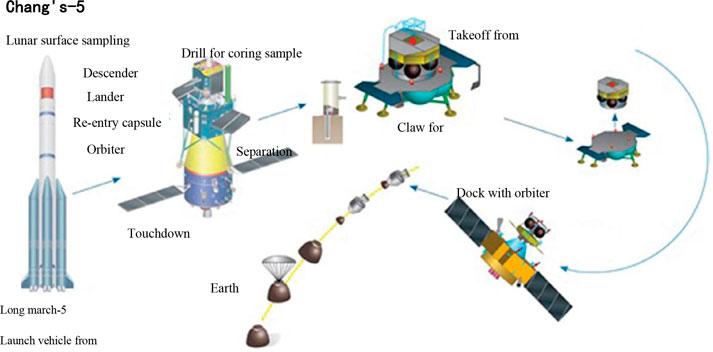
Figure 3. An overview of the Chang’e−5 mission (Xiao et al., 2021).
Besides the United States, the Soviet Union, and China, other countries have also achieved success in lunar exploration. Hiten from Japan tested the technology of orbit control using lunar gravity and aerodynamic braking technology for entering the Earth Moon space, which is a validation of the technology required for future lunar and planetary exploration (Uesugi et al., 1991). The Smart-1 lunar probe of the European Space Agency has detailed the terrain and mineral distribution map of the lunar surface, with a focus on the polar permafrost regions where water is most likely to exist on the lunar surface (Foing et al., 2006). India’s Chandrayaan-3 successfully landed on the southernmost polar region of the moon for the first time (Kanu et al., 2024).
To explore the moon at a deeper level, countries around the world have launched their follow-up lunar exploration programs. Although the Luna 25 launched by Russia failed, they are still confident that a new lunar probe will be produced within 2–2.5 years. The United States announced that Artemis plans to return to the moon in 2017, plans to return astronauts to the moon in 2024, and establish a permanent or semi-permanent lunar exploration base in 2030 (Wang et al., 2020b). Coincidentally, on 21 May 2021, the European Space Agency said that it will land on the moon by 2025 and establish a lunar base (Yu et al., 2021). To build an unmanned lunar research base by 2030, China has identified the remaining exploration missions of the Chang’e plan: Chang’e 7 will comprehensively explore the moon’s terrain, material composition and space environment. In addition to continuing scientific exploration of the moon, Chang’e 8 will also conduct surface tests on some key technologies, such as using 3D printing technology to build a base with lunar soil (Li et al., 2019; Jianghui and Su, 2020).
4 Analysis of single energy systems
The energy system is of paramount importance to the functioning of a lunar base and is a core requirement in its design. Consequently, energy supply is the first issue that must be addressed when establishing a lunar base. The power sources used in human space activities mainly include radioisotope thermoelectric power generation, chemical power sources, solar photovoltaics power generation, solar thermal power generation systems, and nuclear thermal power generation systems, etc. (Palos et al., 2020; Liu et al., 2023; Zhang et al., 2022; Guzik et al., 2017). According to the source of their energy, we classify various power generation systems into three types: chemical energy, nuclear energy, and solar energy generation systems, shown in Figure 4.
Solar energy is a clean and sustainable energy source that poses no pollution or waste issues (Kannan and Vakeesan, 2016). The cost of solar panels is relatively low, and the technology is also mature. Once successfully deployed, the maintenance cost is low. Solar panels can be designed as foldable and expandable, enhancing transport and installation efficiency. However, the lunar day-night cycle lasts approximately 27.3 Earth days (Gurevich, 1967; Habibullin et al., 1974), rendering solar energy unavailable during the lunar night and potentially resulting in power interruptions. Additionally, lunar dust can accumulate on solar panels, negatively affecting their efficiency, necessitating further design considerations for cleaning or protective systems (Zakharov et al., 2020). The extreme temperature fluctuations on the lunar surface (with day-night variations reaching hundreds of degrees Celsius) can also impact the stability and lifespan of solar panel materials. In summary, solar power generation systems are suitable as the primary energy source during the day. However, due to the absence of sunlight during lunar nights, they are inadequate as the sole power supply. It is imperative to incorporate energy storage systems or alternative power sources to ensure a continuous power supply.
Nuclear energy generation systems can provide enduring and stable electricity, unaffected by sunlight conditions, and are capable of supplying continuous power during the lunar night, making them suitable for long-term research tasks (Sovie and Bozek, 1990). However, nuclear systems require highly stringent safety controls to prevent radiation leaks and entail high installation and maintenance costs. Establishing a nuclear power system on the Lunar may also pose radiation pollution risks, particularly during maintenance or malfunctions. Additionally, the heavy weight of nuclear fuel and reactors results in high transportation costs for launching them to the Moon. In summary, nuclear power generation systems are suitable for long-term use, especially under conditions requiring continuous power during lunar nights devoid of sunlight; however, their radioactive safety and transportation costs necessitate careful consideration.
Chemical energy systems, such as batteries, are simple and easy implement, requiring no processes. For short, chemical power provides stable electricity and be designed to meet specific energy demands and discharge rates, thereby satisfying power needs. However, the total capacity of chemical batteries is limited, they are relatively heavy, and once depleted, they generate waste that, if not properly managed, may contaminate the lunar environment, making them suitable for short-term tasks rather than long-term operational research bases. In summary, chemical systems are appropriate for short-term research tasks or as emergency backup power sources, rather than serving as the primary power source for long-term research bases.
It could be seen that whether it was a chemical power source, a nuclear power generation system or a solar power generation system, they all had their own unique features and inevitable flaws. To better serve the lunar base and provide a stable and continuous energy supply for scientific research equipment, it was necessary to make full use of the advantages of each power generation system and make up for its disadvantages.
4.1 The solar energy on the moon
The surface environment of the moon is very different from that of Earth, with a gravitational force of only 1/6 that of Earth and a vacuum degree of up to 1.01×
4.1.1 Photovoltaic power generation system
PV power generation system is an energy type that directly converts solar energy into electrical energy using the photoelectric effect of materials. This system is widely used in various fields of human society, and most spacecraft designs also use it as the main energy source (Papež et al., 2021). The first use of PV power generation systems was on the Vanguard 1 satellite launched by the United States in 1958 (Li J. et al., 2021). One of the first proposals of powering a Lunar base only with an unaided PV system appeared in 1990s (Hickman et al., 1990). In the 3 decades since, PV technology has made considerable progress, and today’s space solar cells offer practical-state multi-junction cells with efficiencies up to 32% (Kaczmarzyk and Musiał, 2021). In the lunar environment, the absence of the atmosphere will make the PV system more favorable, and the power generation will be greatly increased, with the work weight ratio as high as 350 W/kg (van Leest et al., 2019). There are usually two ways to improve the power generation efficiency of a PV power generation system: one is to increase the power generation efficiency of the PV power generation system, and the other is to increase the duration of light exposure to the PV power generation system.
The solar power generation technology has gone through the first generation of crystalline silicon solar power supply. This generation of solar power supply uses single crystal or polycrystalline silicon as raw materials, which has the advantages of rich raw materials, mature technology, and low cost. However, there are shortcomings such as large battery thickness, low efficiency, and poor radiation resistance. The market share of monocrystalline silicon solar cells in the PV market accounts for about 90% (Dambhare et al., 2021). The second-generation thin-film solar power supplies are made of amorphous silicon, cadmium telluride, and copper-zinc-tin sulfide compounds (Kheraj et al., 2013). These raw materials have the advantages of light weight, good radiation resistance, and low cost. However, the second-generation thin-film solar power supplies still have shortcomings such as low efficiency and short lifespan. At present, the third generation of solar power uses concentrated solar power (shown in Figure 5). This generation of solar power combines the advantages of the first and second generations of solar power, making up for the high cost of the first generation of solar power and the low conversion efficiency of the second generation of thin film batteries. It also has the characteristics of rich raw materials, safety and environmental protection. The theoretical efficiency limit for an infinite-junction cell is 86.6% in concentrated sunlight (Green, 2003).
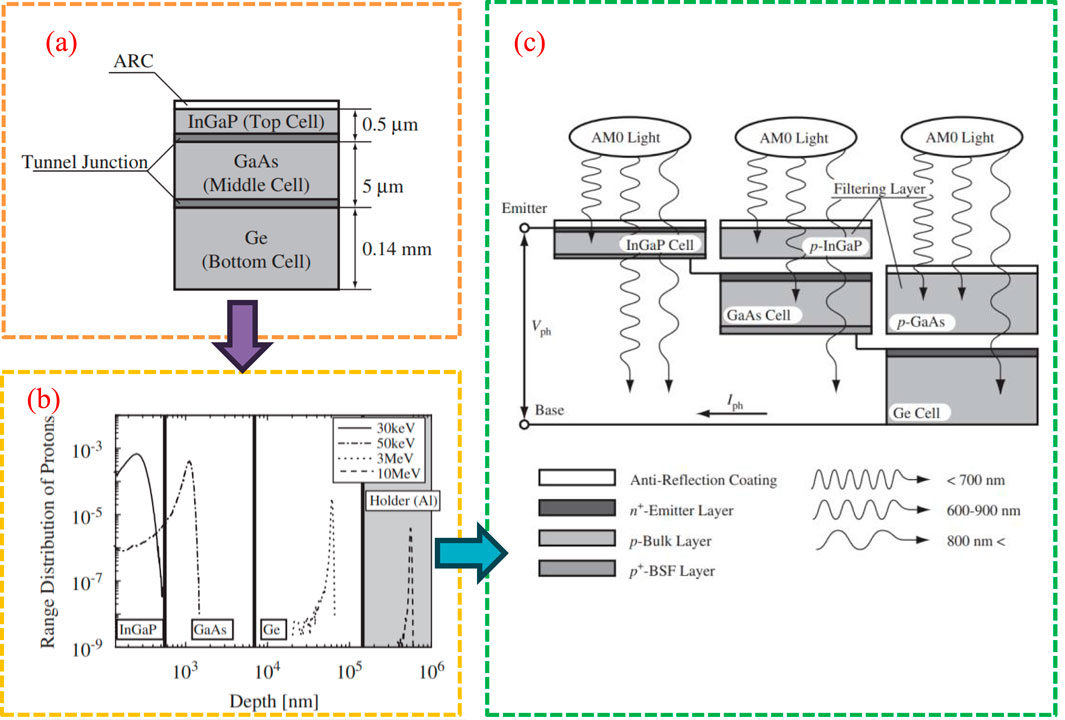
Figure 5. (a) Schematic drawing of a 3J solar cell (b) range distribution of protons in the 3J solar cell calculated from SRIM (c) Structure of 3J solar cell model used by Shin-Ichiro Sato (Sato et al., 2009).
Of course, improving processes and finding higher quality optoelectronic materials are effective ways to improve the efficiency of solar power generation, but they are not the only means. For example, positioning solar arrays even 2 m (7 feet) above the surface significantly increases the duration of illumination (Gläser et al., 2018). Amia K. Ross et al. (Ross et al., 2023) demonstrated that the HIRs near the lunar South Pole have a maximum solar power potential ranging from several to tens of megawatts when utilizing panels mounted on towers up to 20 m in height. Because of the topography of the HIRs in the South Pole region, the maximum power attainable varies by up to a factor of two through a lunar day, and is symmetrical so that the highest value repeats roughly every 14 days. If much taller towers could be built, up to 2 km in height, then the maximum solar power from the HIRs in the South polar region rises to of order several gigawatts. Figure 6 shows the average illuminance at different heights in the South Pole region of the Moon.
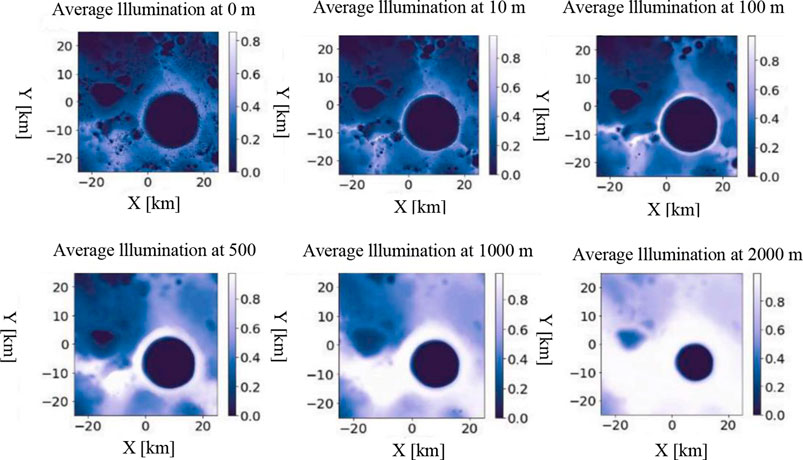
Figure 6. Average illumination at 0, 10, 100, 500, 1,000, 2,000 m, X and Y coordinates in km (Ross et al., 2023).
In addition, Jeffrey M. Gordon proposed an idea of uninterrupted PV power for lunar colonization without the need for storage. The proposal here is to install PV arrays across a 360° latitudinal ring at high latitude and installing transmission lines to the O2 factory. Estimates indicate that this idea can meet the continuous power supply demand of around 10 MW (Gordon, 2022).
The power generation efficiency from the PV panels highly depends on the orientation of the panels and inclination angle (Colozza, 2020). Moreover, the continuously varying solar incidence angle on the solar panel surface significantly changes the panel output power (Mintz et al., 2010). To solve this problem, Colozza, A. et al. proposed a fixed 60-degree tent-shaped array that can maintain a flat power distribution throughout the day. But this scheme provides only 42% of the output power compared to solar tracking arrays (Colozza, 2009). Another approach for solar array configuration is given in (Bintoudi et al., 2019), where a triangular shape of three arrays on a tower is proposed showing increased solar irradiation harnessing throughout a year. For most locations on the Moon, solar power is available during the 2-week-long day and then unavailable for the 2-week-long night. However, near the poles, there are crater interiors that are in permanent shadow and peaks that are illuminated nearly continuously (Mazarico et al., 2011). Shown in Figure 7, this discovery reveals an interesting possibility that if we establish lunar bases in polar regions, we can utilize these permanent light areas to obtain a continuous stream of solar energy (Speyerer et al., 2016).
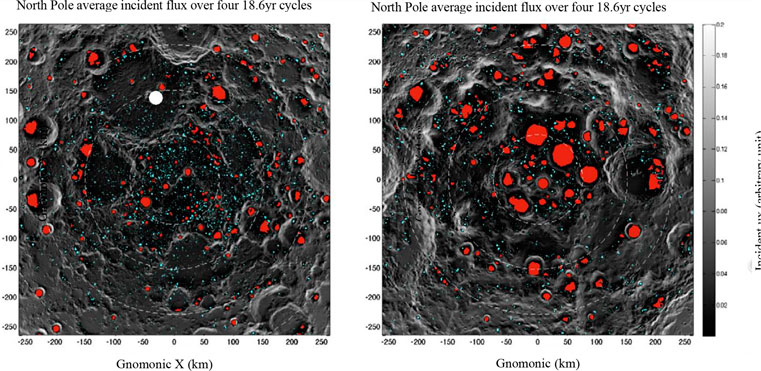
Figure 7. Permanently shadowed regions shown in color over a grayscale map of the average incident flux over four precession cycles. For each pole (a, north; b, south), the red color indicates the 150 largest PSRs. The smaller PSRs are displayed in cyan (Mazarico et al., 2011).
4.1.2 Solar thermal power generation system
Solar thermal power generation system is a device that uses solar energy to heat and expand the working fluid, and drives a turbine to generate electricity in the form of high-pressure gas (Hu et al., 2021). This system generates electricity by converting solar energy into mechanical energy and then converting mechanical energy into electrical energy. Photothermal power generation systems are generally composed of collectors, heat engines, and generators. In recent years, they have been widely used in the civilian field, but their development in space applications is relatively slow. Compared with PV power generation, photothermal power generation systems have the advantages of high efficiency and long lifespan. They directly utilize the thermal energy of solar radiation, making it easy to achieve cogeneration. There is no atmosphere on the surface of the moon, and there is a significant temperature difference between the illuminated and shaded areas. In addition, lunar regolith heat storage coupled with abundant solar energy resources on the Moon is an excellent solution for the sustainable energy supply of lunar base and relevant energy conversion and supply systems have been proposed and studied (Toro and Lior, 2017; Mazzetti et al., 2019).
Garcia conducted a preliminary design study of the viability of a megawatt-class power plant based on concentrated solar thermal energy by means of high concentration parabolic dishes and appropriate volumetric receivers is considered (shown in Figure 8). This consists of standalone power plants operating under optional thermodynamic cycles including the closed Brayton cycle, Rankine cycle, and combined cycles operating with and without heat storage as source and heat sink energies. The results show that it is feasible to utilize local resources to establish lunar solar power station (Garcia, 2012).

Figure 8. Parabolic Dish Collector (PDC)-based power plant structure for Lunar applications: (a) direct thermal coupling and (b) indirect thermal coupling (Garcia, 2012).
Climent et al. conducted a Thermal Energy Storage system, which can run a heat engine during the lunar night to produce electricity. When the Sun is shining on the Moon’s surface, the system can run the engine directly using the solar power and simultaneously heat a thermal mass. This thermal mass is used as a high temperature source to run the heat engine during the night (Climent et al., 2014). Patrick et al. (Fleith et al., 2020) proposed a mathematical model of Thermo-Electric Generator (TEG) power generation system based on in situ energy utilization. In this system, the heat storage process is achieved by heating a modified lunar regolith with a Fresnel collector to raise its temperature during the lunar daytime, and the stored heat is then converted to electricity by TEG at night.
X Li et al. proposed an elaborate dish solar thermal power system based on lunar regolith heat storage is proposed to provide energy to the lunar base during the lunar day and night (shown in Figure 9). A theoretical model is established using finite-time thermodynamic analysis, and the primary irreversible losses of the Stirling cycle are considered. The effects of collection temperature, mass and initial temperature of the thermal energy storage, and radiator area on the system performance are analyzed and discussed. A case study of the system shows that the output power and efficiency of the system gradually decrease whether on lunar days or nights. The average output power during the lunar day and night is 10.8 kW and 7.0 kW respectively. The system can achieve a high total energy efficiency of 48.0% (Li et al., 2023). This work reveals that the proposed system has the potential to supply energy to the lunar base continuously and efficiently, providing a scheme for the energy supply system of the future lunar base.
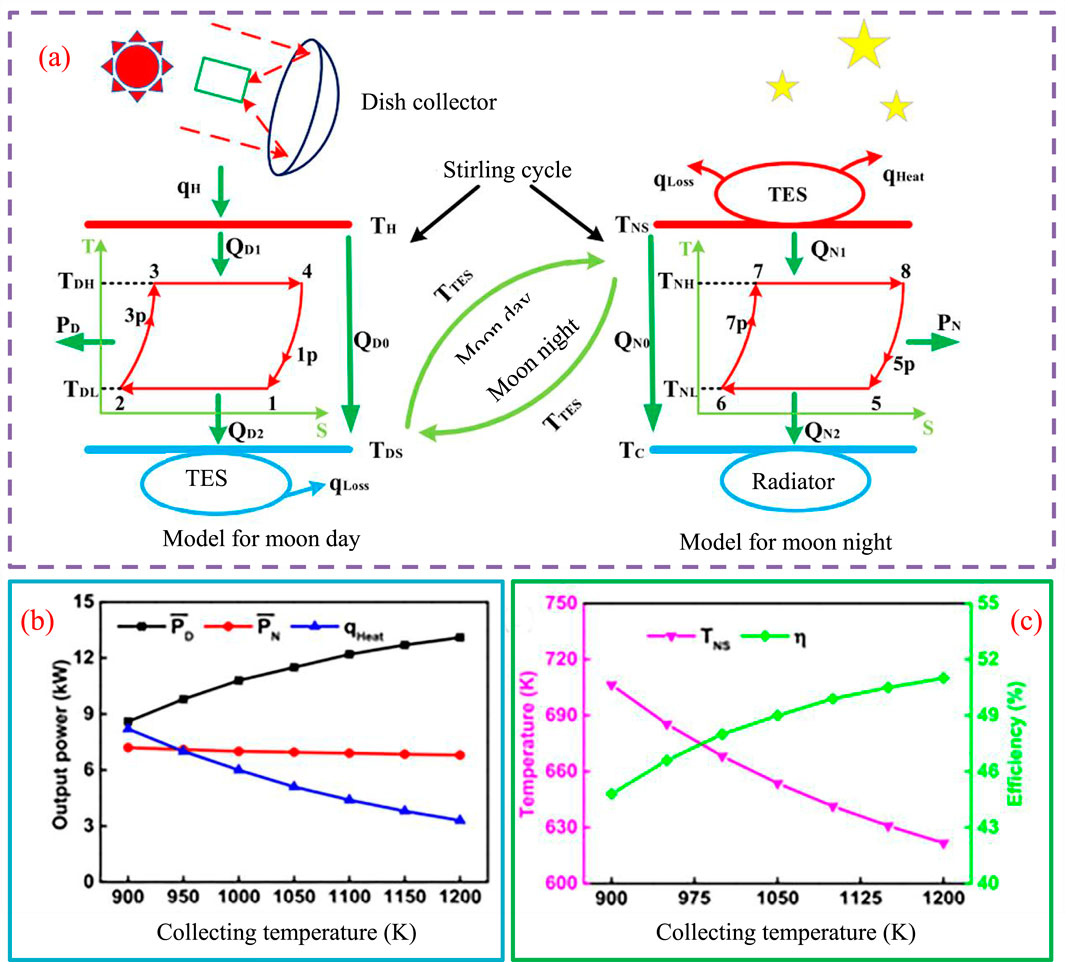
Figure 9. (a) Schematic diagram of lunar solar thermal power generation system based on thermal energy storage (TES) (b) the average output power of lunar day (c) the highest temperature of TES and the total energy efficiency (Li et al., 2023).
Based on in situ resource utilization (ISRU), Dinghua Hu et al. established a solar energy storage power generation system. An efficient linear Fresnel collector is configured for solar concentration. The thermal energy reservoir (TER) coupling with Stirling power generator is designed using the fuel tanks of descent module and lunar regolith. A comprehensively theoretical model based on finite time thermodynamics is developed to analyze the energy flow and efficiency of thermal storage power generation system, and the major irreversibility are considered. The results show that the designed system can produce an average power of 6.5 kW during the lunar night with 19.6% utilization efficiency of collected solar energy in the daytime. The evaluated launch mass of designed power system has a competitive advantage than those of nuclear reactor power and photovoltaic-battery power systems (Hu et al., 2021).
Palos et al. conducted a trade-off analysis on a lunar thermoelectric plant based on ISRU-based system to store heat and generate electricity for lunar missions with both robotic and human activities. The outcome of the trade-off analysis provides a selection of the most suitable technologies to use in an ISRU-based heat storage and electricity generation system (Palos et al., 2020).
Based on this, Liu, Z et al. proposed a closed Brayton cycle and organic Rankine cycle combined power generation system and explored its operational performance throughout the entire lunar solar process. The results indicate that the combination of He-Xe and toluene has the best performance among numerous working fluid combinations. The thermal efficiency of the system can reach 33.82%, and the heat exchange area of the radiator is 970.99
Moon soil constant temperature layer Magnetic levitation power generation technology is based on the principle of organic Rankine working fluid cycle, using magnetic levitation technology, turbine technology, and permanent magnet power generation technology to convert mechanical energy into electrical energy. Due to the absence of mechanical losses in traditional turbine power generation, magnetic levitation power generation technology is more than 10% more efficient than traditional organic Rankine cycle power generation technology. At present, magnetic levitation power generation technology is mainly used to achieve effective utilization of high-temperature waste heat and has not yet been applied in medium and low-temperature heat sources. Based on this, Xie, et al. proposes a lunar temperature difference magnetic levitation power generation technology and implementation concept that fully utilizes the temperature difference between the lunar thermocline and the lunar soil and rock. The principle is shown in Figure 10 (Xie et al., 2020b).
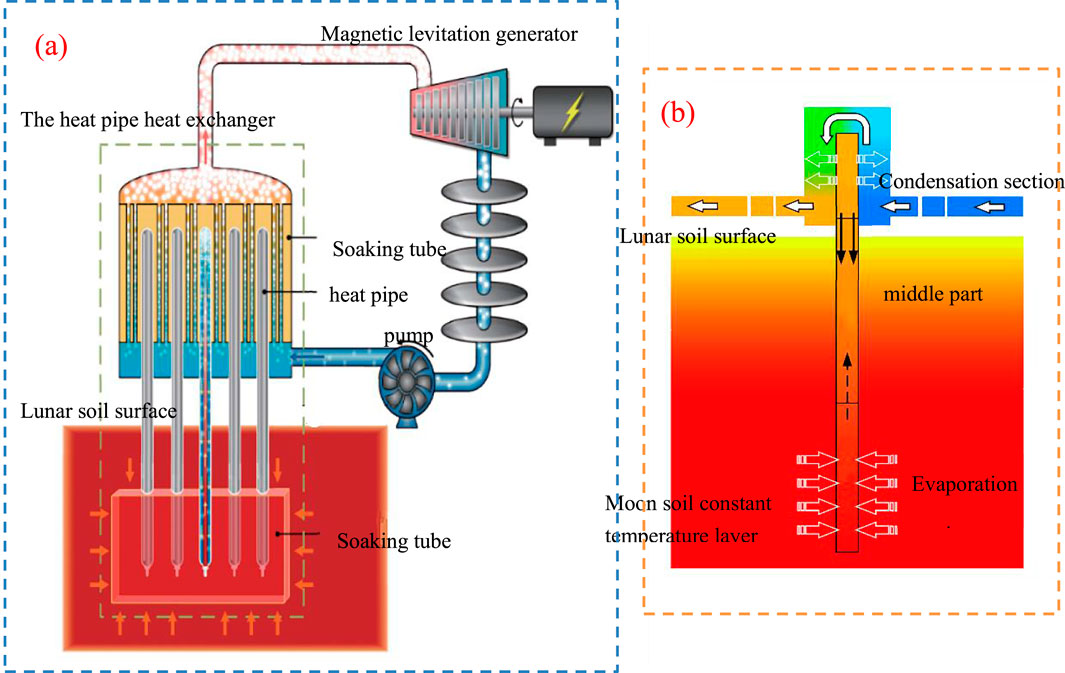
Figure 10. (a) Concept of lunar temperature difference maglev power generation technology (b) Schematic diagram of a single thermosiphon.
4.1.3 Thermoelectric power generation system
Thermoelectric power generation system is an energy type that directly converts thermal energy into electrical energy using the Seebeck effect of thermoelectric materials. Due to its simple working principle and no internal moving parts, it has the advantages of high reliability, pollution-free, long service life, and noise free (Lee et al., 2016). Following Figure 11 shows a simplified schematic diagram of a thermoelectric power generation system, which can output electricity with heat input at TH (cold side heat dissipation at TC).
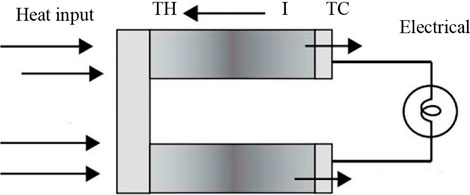
Figure 11. Thermoelectric generation by Seebeck effect (schematic), from Ref (Rowe, 2018).
The special operational characteristics of the lunar result in a relatively fixed pattern of solar radiation heating on its surface. The temperature changes at any position on the lunar surface are almost the same during each day and night alternation period (Malla and Brown, 2015), Moreover, due to the small thermal conductivity of lunar soil, the temperature of lunar soil at a certain depth has remained approximately unchanged (Zu-Fen et al., 2016), Whether it is day or night, there is a maximum temperature difference of up to 100°C in the lunar soil, Utilizing the natural temperature environment of the lunar surface and using thermoelectric power sources to provide electricity during lunar nights is an ideal energy supply solution for lunar bases.
Therefore, based on a thorough investigation of the special properties of lunar soil and rocks on the surface of the moon, and taking full advantage of the large temperature difference between day and night on the moon, many teams have proposed the concept of in situ energy supply technology for the moon, and designed lunar based temperature difference thermoelectric power generation technology and lunar based temperature difference maglev power generation technology and implementation concepts, in order to provide stable, durable, and large-scale in situ energy guarantee for lunar based equipment and related activities, and thus provide relevant technical support for lunar exploration activities (Xie et al., 2020b).
A former member of Spaceship EAC came up with the idea of designing a thermoelectric generator using the regolith that can be found on the Moon, shown in Figure 12. A solar concentrator could heat a block of regolith on one side, thus playing the role of the heat source of the generator. On the other side, loose regolith would play its role as the cold sink. In his work, he found out that when the hot part of the generator was at around 500 K, the heat loss was acceptable for a 52 h’ time frame, which corresponds to the night duration in the South Pole of the Moon (Lozano, 2016).
Xie Heping et al. proposed a lunar based in situ energy support technology concept that utilizes the temperature difference between the lunar soil and rock constant temperature layer and the lunar surface to generate electricity shown in Figure 13. They designed a lunar thermoelectric material thermoelectric power generation technology and implementation concept. He system directly utilizes thermoelectric materials to achieve continuous day night thermoelectric conversion. The device is designed with three layers of heat sharing plates connected by heat pipes to solve the problem of insufficient heat transfer caused by poor thermal conductivity of the lunar soil surface. It continuously converts the radiation energy (daytime) and thermal energy (nighttime) of the lunar soil into electrical energy, which can almost meet the needs of all space energy systems (Xie et al., 2018).
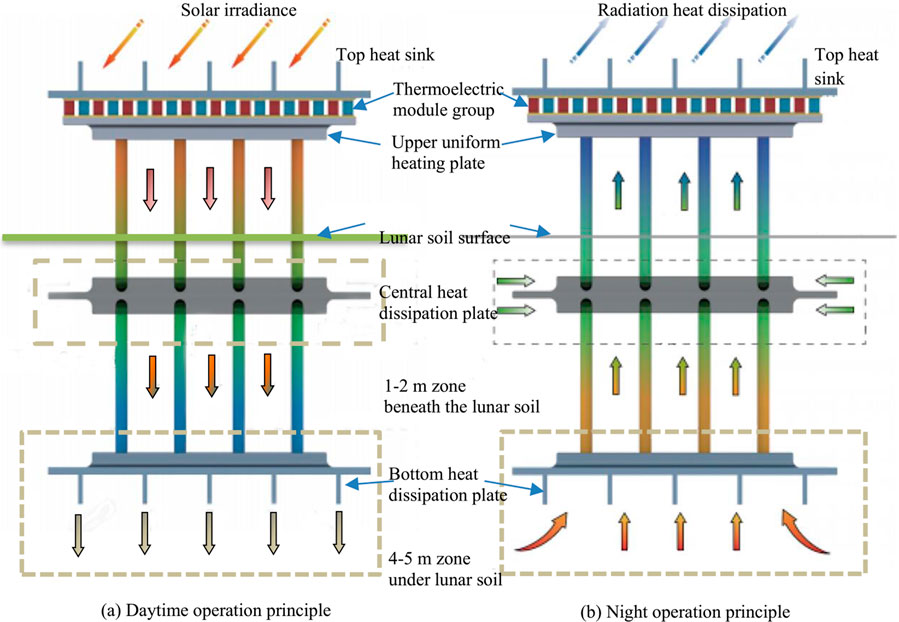
Figure 13. Operating principle of temperature difference based thermoelectric power generation system. (a) Daytime operation principle. (b) Night operation principle.
Besides, the development of thermoelectric for space application will also benefit humankind on earth, since studies have revealed that more than 60% of the worldwide energy is pointlessly lost, mostly as heat waste, which could be used by such generators to provide sustainable energy (Zhang and Zhao, 2015).
4.2 Nuclear power generation
A nuclear reactor power generation system is a device that utilizes nuclear fission (or fusion) reactions to generate heat energy, which is then converted into electrical energy. Unlike PV and solar thermal power generation systems that rely on solar energy for power generation, nuclear reactor power generation is not affected by external environmental changes and has the ability to continuously supply power during the day and night of the month, especially in terms of high-power power supply, with outstanding weight advantages (Ying et al., 2020). It is considered the most ideal, reliable, and even the only solution for providing electrical and thermal energy in lunar bases and other deep space exploration missions (Yao et al., 2016). At present, the main forms of nuclear power generation are: controlled nuclear fusion power supply, fission reactor power supply and isotope thermoelectric power supply.
4.2.1 Controlled nuclear fusion reactor power
The nuclear fusion power generation system is a process that combines light nuclei (such as isotopes of hydrogen) into heavier nuclei (such as helium) and releases a large amount of energy (Takeda and Pearson, 2018). This process can simulate the energy generation in the sun’s core, providing clean and sustainable energy for humanity. Nuclear fusion has high energy density, huge reserves, environmental friendliness, and profound development potential. It is the best energy source to support future production and life of human society (Morse, 2018), and also one of the most ideal energy sources for establishing a lunar base. The fusion process of greatest research interest combines the nuclei of two isotopes of hydrogen: deuterium and tritium fusion. Each fusion reaction releases a neutron, which can be used to heat steam to drive a turbine and generate electricity. The reason why fusion is not presently a source of power generation is that the energy input for the heating and confinement exceeds the energy output for current reactor designs.
3He has been a focus of lunar nuclear fuel extraction for many years now due to the relative rarity of 3He on Earth, and the favorable characteristics of the two potential fusion reactions that it can sustain (Bruhaug and Phillips, 2021). When reacted with deuterium, the deuterium-3He (D3He) fusion reaction only produces charged particles in the primary chain (D + 3He! 4He + p +18:3 MeV) and is considered an advanced potential fusion fuel that requires more extreme conditions than the current fusion fuel of focus, deuterium-tritium (DT). Secondary reactions during the burn of D3He do make neutron radiation, but far less than the other more near-term potential fusion fuels. D3He fuel has an energy density of 3.53E+08 MJ/kg (Simko and Gray, 2014; Atzeni and Meyer-ter-Vehn, 2004), which is the highest of all nuclear reactions that are commonly considered for energy production.
Lunar 3He is deposited in the soil from the solar wind and is found at ∼4.2 ppb or 0.007 g/m3 of lunar regolith on average (Simko and Gray, 2014; Crawford, 2015) with higher concentrations on the order of 20 ppb found in Mare Tranquillitatis and Oceanus Procellarum due to the rich titanium deposits found there. Volatiles such as 3He are expected to be roughly evenly deposited through the first couple meters of lunar soil due to the slow churn of the lunar surface.
Extrapolating from analyses of samples returned from the Apollo 11 mission
Although building a nuclear fusion power generation system on the moon has many advantages, it also has many disadvantages. First, it is difficult to build. The temperature difference between day and night on the moon is huge, and it is difficult to create extreme temperature conditions. The vacuum environment requires high equipment sealing, heat dissipation and material performance. The complex lunar terrain makes site selection and construction difficult. Second, transportation and logistics support are difficult. The long distance between the earth and the moon leads to high cost and long cycle of material transportation and personnel round trip, and it is also difficult to establish a logistics support system. Third, the technical maturity is low. Nuclear fusion technology on earth is still developing, and it needs to be optimized to adapt to the lunar environment, and there is a lack of experience in lunar construction. Fourth, the safety risk is high, the radiation hazard is large, and the accident rescue and handling are also extremely difficult.
4.2.2 Nuclear fission reactor power supply
The space fission nuclear reactor power supply is a device that comprehensively utilizes the thermal energy generated by the nuclear fission reaction process, mainly composed of a reactor, thermoelectric conversion system, radiation shielding system, and waste heat discharge system (Bennett et al., 1996). Compared with other types of energy systems, space nuclear reactor power supply has the characteristics of high power, long lifespan, strong survival ability, and can work all day (Bennett et al., 1996). It also has a wide range of applications in the space field and is considered the most ideal energy type for lunar bases and other deep space exploration missions (Yao et al., 2016). Since the 1960s, the United States has conducted extensive research on space nuclear reactor power supplies for the Lunar and Mars bases, proposing various representative design schemes (Upton et al., 1991; Mason et al., 2008; King and El-Genk, 2006; Poston, 2001). For example, the “Heat-pipe-Operated Mars Exploration Reactor” system developed by the United States for Mars bases has an output power of 3 kW and a total mass of 2.13 t (Poston, 2001). The Affordable Fission Surface Power System has an output power of 40 kW and a total mass of 8.8 t in a fully integrated solution (Mason et al., 2008). In 2018, a 1 kW-kilopower reactor was tested at Nevada National Security Site. The reactors consist of sodium heat pipes to transfer the heat generated from the highly enriched uranium core to Stirling engines. This successful test has prompted the technology to increase the power level from 1kW to 10 kW. Several 1 or 10 kW units can be grouped to create a modular power generation system. In these modules, the uranium reactor cores need to generate 43 kW of thermal power to generate 10 kW of electrical power and transfer the heat to the power conversion system through sodium heat pumps (Gibson and Schmitz, 2020).
In recent years, countries such as Russia, China (Yao et al., 2016), and Japan have also carried out corresponding research work. To avoid environmental pollution and radiation damage to personnel, the reactor must consider shielding and protection against neutrons; To ensure the safety of the reactor and improve energy conversion efficiency, liquid metals with good thermal conductivity and large heat capacity are often used as cooling working fluids, and even multi-stage cooling is required. These necessary designs have led to a significant increase in the weight of the power system. Yao Chengzhi et al. proposed a nuclear power supply system scheme that uses Stirling conversion, liquid metal Li cooling of the core, K heat pipe radiator heat dissipation, lunar soil shielding, and rotational control drum control reactivity. The analysis results show that the system can generate electricity with a power output of 40kWe, a thermoelectric conversion efficiency of 23%, and a lifespan greater than 8 years, which can meet the power needs of the lunar base, as well as safety and lifespan requirements (Yao et al., 2016).
Under the Kilo-power project, a NASA and Department of Energy team designed, built and tested a space-relevant 1 kW-class fission reactor, shown in Figure 14, with technology that is extensible to about 10 kw (Briggs et al., 2018; Gibson et al., 2018). The Kilowatt Reactor Using Stirling Technology (KRUSTY) test included an enriched UMo core, BeO neutron reflector, Na heat pipes, and free-piston Stirling engine converters. Nuclear testing at the Nevada National Security Site revealed a reactor power system that was robust, well-behaved, predictable, self-regulating, and multi-fault tolerant. In addition to satisfying all test objectives, the project showed that a flight-like fission power system could be developed quickly and affordably. A flight version of the l kW test prototype has a system mass of about 400 kg.
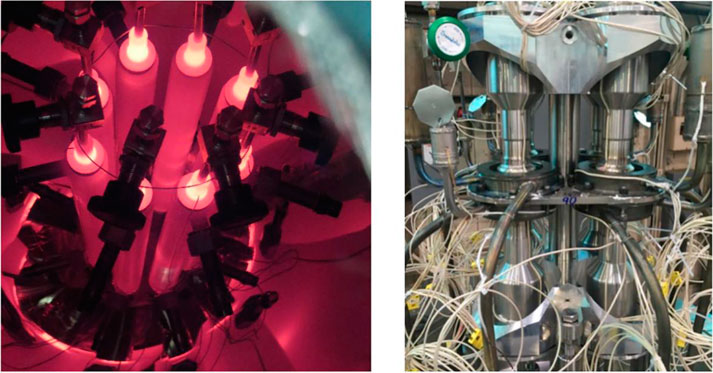
Figure 14. System-level testing of kilowatt reactor using stirling technology at NASA Glenn Research Center (Briggs et al., 2018).
Building on the success of the KRUSTY test, Space Technology Mission Directorate hopes to flight demonstrate a 10 kW-class fission power system on the lunar surface in the mid-to late-2020 sunder the Technology Demonstration Mission (TDM) Program. The initial concept has an estimated mass of 1,500 kg including a circumferential radiation shield surrounding the reactor core. The system could be integrated with a mid-size lander and operated on the lunar surface for at lunar least 1 year. The mission concept is still being formulated, but could include provisions to power an ISRU demonstration plant and recharge mining rovers that supply raw material to the plant. Some of the key objectives for the fission power TDM include nuclear launch approval, launch and landing survival, remote start-up, extended operations, standby and partial power automated operations, and adherence to specified radiation limits at established boundaries where sensitive equipment would be located. Most importantly, a successful fission power demonstration would give mission planners greater confidence to use the technology for later human missions on the moon.
Uranium is a commonly used nuclear material. However, the nuclear waste generated from uranium combustion is highly radioactive, challenging to manage and store, and requires thousands of years to decay to safe levels. Natural uranium resources are limited and primarily concentrated in a few countries, with significant mining and refining costs, as well as environmental pollution. In response to these challenges, Schubert (2019) proposed using thorium as a raw material for nuclear reactors, given that the lunar contains abundant thorium resources. If this resource can be concentrated and converted, it may provide fuel for nuclear reactors that can be launched without any radioactive material. Additionally, high-density nuclear fuel derived from local lunar resources would help to reduce the launch weight of each reactor.
At present, the power supply system of nuclear fission reactors still has problems such as high weight, low mass to power ratio, weak system self-operation ability, high accident risk, and significant accident impact. However, it is still one of the best choices for energy construction on lunar bases.
4.2.3 Radioisotope power generation system
Radioisotope thermoelectric generator (RTG) is one of widely used power sources for deep space and celestial bodies explorations which has been developed for >60 years. RTG is a device that generates electricity using heat released by the natural radioactive decay of isotopes, typically plutonium-238 (Tailin et al., 2023). The heat is converted into electricity through thermocouples, which are solid-state devices that can convert heat directly into electrical power without moving parts. RTG consists of three main parts: heat source, transducer, and heat sink. The heat source of this battery is composed of radioactive isotopes, which release heat during the decay process and are safely encapsulated in a metal casing. The entire RTG system effectively dissipates heat through an external radiator and creates a temperature difference on the intermediate thermoelectric power generation module. Through the Seebeck effect, this temperature difference can drive the thermoelectric power generation module to generate direct current, achieving the conversion of nuclear energy into thermal energy and then into electrical energy (Prelas et al., 2014). The typical structure of a thermoelectric battery is shown in Figure 15.
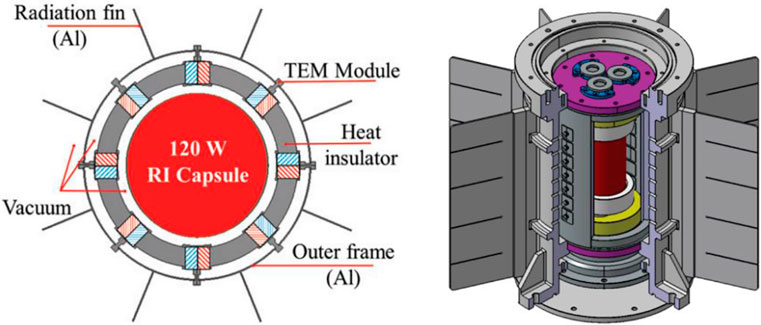
Figure 15. RTG design with circumferential alignment of thermo-electric modules (Hong et al., 2016).
During the development of radioactive isotope batteries, different types of nuclear batteries have been formed. According to different energy exchange methods, they can be divided into two types: thermal conversion type and non-thermal conversion type. Among them, thermal conversion type nuclear batteries convert the decay heat released by the spontaneous decay of radioactive isotopes into electrical energy, and can be divided into dynamic and static types based on the presence of movable energy exchange components; Non thermal conversion refers to the direct or secondary conversion of charged particles or decay energy generated during the decay of radioactive isotopes into electrical energy, which can be further classified into various types of nuclear batteries based on different conversion principles, as shown in Figure 16. It is worth mentioning that various types of nuclear batteries have their own advantages and disadvantages, but overall, non-thermal conversion nuclear batteries have relatively low conversion efficiency, and their application scope mainly involves precision electronic devices (Xiaoyi et al., 2020), as shown in Table 4.
Radioisotope power systems (RPS) have a distinct advantage for operating in the lunar environment and had been used successfully during the Apollo missions. Utilizing isotope fuel allows independent operation from the Sun and does not require energy storage batteries as a main nighttime power source. However, a smaller battery could provide load leveling for certain episodic operations requiring power above the baseline power output. This would allow a smaller RPS unit minimizing amount of isotope required. The Curiosity rover utilizes this approach where the Multi-Mission Radioisotope Thermoelectric Generator (MMRTG) can charge the battery to support events requiring power loads above the MMRTG output (Cataldo et al., 2018).
Another advantage is the heat generated by the natural decay of an isotope. This heat can be easily channeled to components requiring specific operating temperatures such as electronic parts and batteries via heat spreaders or active cooling loops such as that on Curiosity rover. The waste heat would eliminate the need for electric heaters and the mass associated with the additional battery power. The lunar thermal environment will affect the RPS electrical output such that the higher effective radiator sink temperature will lower the power output. Figure 4 shows the estimated power output between lunar day and night for the MMRTG and enhanced-Multi-Mission Radioisotope Thermoelectric Generator (e-MMRTG) (Cataldo and Woerner, 2016). The power swing for the e-MMRTG is about 2–3 We and about 5–6 We for the e-MMRTG.
4.2.4 Safety and waste management for lunar nuclear systems
Radiation Shielding: The lunar regolith rich in iron and titanium can be sintered into a radiation shielding barrier around the reactor. Yulia Akisheva et al. (Akisheva and Gourinat, 2021) used NASA’s OLTARIS simulation tool and found that the combination of “compressed regolith (5 g/cm3) + aluminum + polyethylene” has the best protection effect against GCR and SPE, which can significantly reduce the radiation dose of astronauts. For radiation protection, it is recommended that the thickness of the regolith cover should be at least 70 cm.
Passive Safety Design: Liquid-metal-cooled reactors (e.g., sodium-potassium alloys) utilize freeze-proof seals that automatically isolate leaks in vacuum conditions.
Waste Disposal: Short-term solutions include burying spent fuel in permanently shadowed craters to minimize cosmic ray interaction. Long-term proposals involve encapsulating waste in radiation-resistant ceramics and ejecting it into heliocentric orbit via lunar mass drivers.
4.3 Technology readiness levels (TRLs) and deployment prioritization
The maturity of energy technologies has a significant impact on their deployment feasibility. Table 5 summarizes the Technology Readiness Level (TRL) assessments of three lunar energy systems.
Systems with higher TRLs (e.g., solar) are prioritized for near-term missions, whereas nuclear solutions require further prototyping in simulated lunar environments.
4.4 Fuel cell system
Fuel cell is a power generation device that can directly convert chemical energy stored in fuel and oxidants into electrical energy. It has the characteristics of high energy conversion efficiency, pollution-free, and high specific power (Anahara et al., 1993). As humans face increasingly serious energy shortages and environmental pollution issues, the advantages of fuel cells have become increasingly prominent, triggering a widespread research boom and achieving practical applications worldwide. Especially in the field of space applications, the development of various new spacecraft in recent years has provided a wide range of application backgrounds for fuel cells (Guzik et al., 2017). As early as the 1960s, hydrogen oxygen fuel cell systems (Shown in Figure 17) were already used as the main power supply system on spacecraft such as the American Gemini manned spacecraft, the Apollo lunar landing spacecraft, the Russian lunar orbiter, and the Blizzard spacecraft (Depeng et al., 2017).
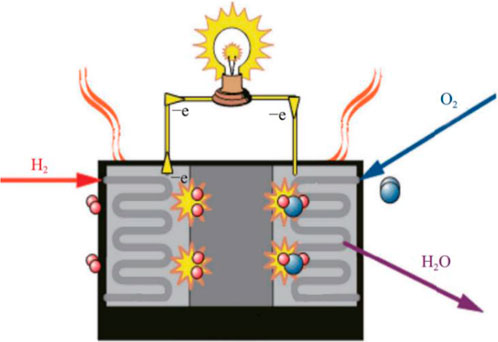
Figure 17. Principle of operation of hydrogen–oxygen fuel cell (Depeng et al., 2017).
At present, hydrogen oxygen fuel cells are the main application in the space field, with proton exchange membrane fuel cells being the mainstream for subsequent development and application (Barbir et al., 2005). In recent years, a renewable fuel cell system has been developed based on hydrogen oxygen fuel cells, combined with water electrolysis technology and PV power generation technology, to solve the problem of limited working time of fuel cells due to carrying fuel. Its specific energy can reach up to 400-1000 Wh/kg, which has obvious advantages over traditional batteries (Bizon et al., 2015). Renewable fuel cells can achieve the recycling of material and energy, output both electrical and thermal energy, and provide excess water for astronauts to drink, making them particularly suitable for lunar bases (Jan et al., 1993).
European Space Agency has proposed a regenerative fuel cell system working on the lunar surface. The proton membrane exchange fuel cell is adopted, which is compact, firm, and has a long life. The specific energy potential of the fuel cell is greater than 500 W/kg, and the peak power can reach 12.8 kW (Barbera et al., 2014). Giacoppo et al. (Giacoppo et al., 2019). designed, manufactured and tested a 2-kW polymer electrolyte fuel cell stack. Under the operating temperature and pressure of 75°C and 3 bar, the stack efficiency was 52%, and the voltage and current were 57.8 V and 48 A respectively. An experimental fuel cell from the University of Illinois that is based on hydrogen peroxide rather than water has demonstrated an energy density of over 1,000 Whkg-1 with a theoretical limit of over 2,580 Whkg-1 (Luo et al., 2008).
4.5 Emerging energy transmission technologies
4.5.1 Electrostatic power generation
Over many millennia, the constant bombardment of meteoroids with the lunar surface has pulverized the regolith into fine particles. Combined with the lack of both a lunar atmosphere and a magnetic field, the result is negative charging of the fine dust by continuous bombardment of electrons and protons from solar winds. These negatively charged fine particles can be charged to a critical level up to several thousand volts of static electricity. The electrostatically charged particles can cause arc damage and short-circuit electrical systems in ungrounded equipment. This negative static charge affects the dust in the lunar’s vacuum, leading to mutual repulsion and reducing their collective potential (Ball, 2007). This intriguing phenomenon was noted by the Clementine and Surveyor missions. During the Apollo 17 lunar landing, the presence of charged dust posed significant challenges. This dust clung to the astronauts’ spacesuits, equipment, and lunar rovers, leading to visibility issues as it accumulated on their suits. Additionally, the dust was inadvertently brought inside the spacecraft, resulting in breathing discomfort for the crew (Williamson, 2002). In the vacuum of the Moon, particles can accumulate an exceptionally high charge. An article published in the journal Nature on 2 February 2007, titled “Lunar too static for astronauts?” estimates that the surface of the Moon can be charged to levels reaching several thousand volts (Ball, 2007).
Regarding this issue, Sang H. Choi et al. successfully completed an experiment on the possibility of collecting lunar soil static charges from solar wind by using a simulated lunar weathering layer in a laboratory device and using a mobile capacitor array as a DC power source. The regolith simulant was charged by a flood stream of e-beam flux for a set period. The charge collection was proportional to the exposure period of simulant to e-beam flux. Such a process demonstrates a method for lunar power generation while simultaneously neutralizing the charged regolith simulant. The equivalent circuit diagram is shown in Figure 18.

Figure 18. Equivalent circuit of power collection and conversion device from negatively charged Lunar-soil.
The electrostatic power generator was developed to mitigate dangers posed by the negatively charged lunar soil. It achieves this by neutralizing the charged particles via capacitive coupling, while also generating electricity through the process of charging (Choi et al., 2025). The power generated or collected by the device relies on two key factors: the area it covers and its hovering speed above the lunar soil. A thin-film capacitor array can be continually charged and discharged in a sequential manner using a time-differentiated triggering mechanism. This process generates a pulse train, enabling a direct current (DC) output. By adjusting the pulse intervals, the power in DC mode can be fine-tuned to meet the needs of various devices and equipment. When combined with a power storage system, this electrostatic power generator can serve as an energy source for lunar rovers or other systems. Additionally, the negatively charged lunar soil would be neutralized, helping to alleviate some of the negative effects associated with lunar dust (Choi et al., 2010).
4.5.2 Laser energy transmission technology
Recent advancements in wireless energy transmission have introduced novel solutions for lunar applications. For instance, Mukundan et al. (2023) proposed a foldable laser-based system designed for miniaturized rovers, which achieves energy transfer efficiency of 15%–20% over 100-m distances in simulated lunar vacuum conditions. This technology could complement traditional power grids by enabling targeted energy delivery to exploration vehicles or equipment in permanently shadowed regions. However, challenges remain in scaling the system for high-power demands (e.g., >1 kW) and mitigating dust-induced beam scattering.
4.6 In-Situ resource utilization (ISRU) and synergy with energy systems
The utilization of lunar regolith for construction materials (Chen et al., 2024) (e.g., oxygen extraction, solar cell substrate fabrication) and water-ice deposits for fuel production could significantly reduce Earth-dependent logistics. For instance, ISRU-derived silicon-based photovoltaic components may enhance the sustainability of solar energy systems. However, the energy-intensive nature of ISRU processes (Zhang et al., 2023) (e.g., electrolysis of regolith, 3D printing) necessitates a symbiotic design between energy generation and resource utilization units. Current ISRU prototypes [e.g., NASA’s ROxygen reactor (Lee et al., 2013), ESA’s PROSPECT drill (Heather et al., 2022)] highlight technical bottlenecks in automation and energy efficiency, which must be prioritized in future system integration efforts.
4.7 Mass-to-power ratio analysis
The quality of each energy system directly affects the transportation cost. A large power - to - mass ratio is conducive to the construction of the early - stage energy system. The energy density of lithium-ion batteries is approximately 220 Wh/kg (Kulova et al., 2020). Since lithium-ion batteries require fewer auxiliary components, for a power supply system with an energy storage capacity of 10 kW, its mass is estimated to be 33–50 kg. D'Antonio et al. (2019). designed a solar microgrid system for space applications. Its specific power is 35.56 W/kg. In this paper, this system is used as a reference, and devices such as fixation and support are added. Finally, for a 10 kW solar power generation system, its mass is estimated to be 460–665 kg. Hu et al. (2021). designed a solar thermal energy storage and power generation system, and the estimated launch mass of this system is 1,000 kg. Compared with the nuclear reactor power battery and the photovoltaic - battery power supply system, the specific power of the current system is 16.1% greater than that of the Kilopower nuclear power system, and it has a huge advantage over the photovoltaic - battery power supply system in terms of total launch mass. Smith et al. (2022) analyzed the renewable fuel cell system at the lunar south pole. The maximum energy density of the system is 550 Wh/kg. To meet an output power of 10 kW, the regenerative fuel cell system would consume approximately 13,000 kg of fuel within 30 days. Considering other devices in the system, the mass of a 10-kW-class renewable fuel cell system at the lunar south pole is estimated to be 12,000–16,000 kg. The total mass of Kilopower nuclear power system designed and fabricated by NASA is about 1,246 kg with the output power 7 kW (Poston et al., 2015), and the system specific power is 5.6 W/kg. Based on this, it is estimated that building a “10 kW” nuclear power system would require approximately 1,110–1,830 kg. For the GPHS-RTG used in the Cassini-Huygens mission (Wang et al., 2020a), its output power is approximately 245–300 W; its mass is approximately 56 kg; and the mass-to-power ratio is approximately 5.4 W/kg. The mass estimations of each energy system are shown in Table 6 below.
The chemical battery system has the lowest mass, but it is only suitable for short-term/mobile power supply needs. Its long-term operation is limited by the energy storage capacity. It can assist other energy systems in dealing with sudden power fluctuations. The mass of the solar photovoltaic power generation system is significantly lower than that of the solar thermal power generation technology, because the solar photovoltaic power generation system directly converts light into electricity without the need for a heat transfer medium. It needs to be equipped with an energy storage system to cope with the 14-day lunar night (such as microcrystalline batteries or underground heat storage). The mass of the nuclear fission power generation system is better than that of fuel cells, and it is suitable for high-power continuous energy supply. The problems of radiation shielding and heat dissipation need to be solved. The current mass of the nuclear fusion power generation system is too high, but the helium-3 fusion fuel has great potential. If a technological breakthrough is achieved, it could subvert the energy landscape.
5 Technical challenges and prospects
The establishment of a lunar base first requires solving the problem of power supply. The power system should have high power generation efficiency, high safety and reliability, and strong environmental adaptability, capable of long-term power generation and energy storage under extreme environmental conditions on the moon. The main power sources that can be used for lunar bases now or in the future include radioactive isotope thermoelectric power generation systems, chemical power sources, solar PV power generation systems, solar thermal power generation systems, and nuclear thermal power generation systems. The energy system of the lunar base has multiple requirements, and a single type of energy system has obvious advantages and disadvantages, as shown in Table 7.
Chemical power sources have high power and short lifespan, generally requiring a large amount of fuel to carry, and are suitable for temporary use, making it difficult to sustain the energy supply of lunar bases in the long term. Solar power sources have high power, long lifespan, and high reliability, but they are large, rely on sunlight, and have limited power levels and usage environments. Even if located in the polar regions of the moon, it is difficult to support the energy supply of lunar bases in the long term. The power generated by radioactive isotope batteries is relatively small, generally not exceeding 10kWe. At the same time, 238Pu is relatively expensive and can be used for temporary or emergency power sources, but it is difficult to serve as a long-term power source for lunar bases.
Compared with chemical power sources, solar power sources, and isotope batteries, nuclear reactor power sources have the characteristics of high power, long lifespan, strong survival ability, independence from sunlight, and ability to work around the clock. They are considered the most ideal, reliable, and even the only solution to provide electricity and heat energy for lunar bases and other deep space exploration missions (Gu and Shouzhi, 2017). However, with current technology, humans are still unable to send a complete set of nuclear reactor power sources to the moon, not to mention a more ideal fusion power system.
In addition, emerging methods such as laser-based energy transmission and lunar soil electrostatic recovery systems show the potential to overcome traditional limitations. However, their development must prioritize environmental adaptability tests (such as long-term exposure to dust) and interoperability tests with the centralized lunar power grid.
Therefore, it is particularly important to use various power systems in stages, locations, and flexibly in combination. According to the current pace of technological progress in humanity, we can speculate that the construction of lunar bases can be divided into four stages: primary, intermediate, advanced, and application.
Primary stage: An unmanned base will be established, mainly managed by intelligent robots. Its main task is to conduct in-depth lunar scientific exploration and experiments, verify key technologies such as lunar ore mining, building material preparation, oxygen production, energy utilization, etc., lay the foundation for future manned bases, and ensure that the lunar work cycle of the base is not less than 1 year. At this stage, the lunar base mainly relies on local solar PV power generation systems, supplemented by fuel and isotope power sources to provide energy to the lunar base.
Mid-term stage: A short-term manned base will be established to provide living conditions for 5 to 10 astronauts for about 6 months. Its main tasks include building a circular ecosystem to validate survival systems, installing and testing functional modules for base expansion, mining ores and lunar soil, and preparing materials for base maintenance. At this stage, the lunar base establishes a relatively complete solar PV and photothermal power generation system, which is combined with fuel cell system supply, temperature difference power generation system, and isotope power generation system to provide energy for the lunar base.
Advanced stage: Through the development of the mid-term stage, the various components of the base have been fully equipped and can function normally. The lunar base can now accommodate 100 astronauts for long-term stationing. At this point, the focus of the lunar base has shifted to the development and application of lunar resources. The main task of this stage is to expand the scale and guarantee conditions of the base by utilizing the in situ resources of the moon. At this stage, the lunar base establishes a small-scale nuclear fission power generation system, which is combined with solar PV and thermal power generation systems, fuel cell system, thermoelectric power generation systems, and isotope power generation systems to provide energy for the lunar base.
Application stage: At this stage, the lunar base has developed into a fully functional and self-sufficient lunar ecological town, capable of producing and storing necessary resources and energy to supply the Earth, fully realizing the functions of the lunar base, and fully playing the role of a relay station for humans to enter the space age. At this stage, the lunar base establishes a large-scale nuclear fission power generation system (or nuclear fusion power generation system), which is combined with solar PV and thermal power generation systems, fuel cell system, thermoelectric power generation systems, and isotope power generation systems to provide energy for the lunar base.
The construction and maintenance of lunar energy systems face inherent logistical challenges, including high launch mass penalties and limited human/robotic intervention capabilities. To address these, modular system design (e.g., deployable solar arrays, compact fission reactors) and robotic autonomy advancements (e.g., self-repairing circuits, dust mitigation technologies) are critical. While this review does not quantify cost-efficiency metrics, the proposed technical solutions inherently aim to minimize logistical burdens through lightweight materials, ISRU integration, and fault-tolerant architectures.
6 Conclusion
This work comprehensively introduces the Moon’s environment, reviews the history of human lunar exploration, and systematically analyzes nine potential methods for constructing lunar-based energy systems, drawing several conclusions. For lunar bases, electrical energy is primarily derived from solar, chemical, and nuclear energy conversions, categorized into static power sources without mechanical motion and dynamic power sources with mechanical motion (thermal cycles). Static power sources offer substantial advantages in reliability and lifespan due to the absence of moving parts. Devices such as solar cells and batteries lack macroscopic fluid flow, simplifying heat dissipation issues, which require relatively small operational space. Static power supplies effectively manage heat flux among battery components, address heat dissipation on surfaces, and regulate battery power output. Currently, the power systems utilized in the limited lunar missions are static power sources. Dynamic power supply mainly refers to systems that use thermal cycle power generation. The technology of this system on Earth is relatively mature, with high power generation efficiency, and can usually provide sustained and stable large-scale power output; If the influence of lunar environment on dynamic power supply can be overcome (eg. The extreme lunar vacuum environment critically impairs heat dissipation in dynamic power systems, leading to thermal management challenges and potential component failure due to overheating), from the perspective of heat dissipation principle, dynamic power supply is more suitable for the construction of high-power power generation systems.
The energy system of the lunar base has multiple requirements, and a single type of energy system has obvious advantages and disadvantages, making it difficult to fully meet the energy needs of the lunar base. Therefore, it is necessary to consider the combination of multiple energy types, integrate the advantages of each system, and compensate for their respective shortcomings, to adapt to the energy needs of lunar bases of different sizes and stages.
The energy system of the lunar base will develop along the technological route of solar energy-nuclear fission energy-nuclear fusion energy. The lunar has abundant solar energy, and achieving comprehensive utilization of solar energy is a common goal of lunar bases at all stages; Lunar soil contains abundant helium-3 resources, which are clean, efficient, and safe raw materials for nuclear fusion reactions. With the continuous expansion of lunar bases and the continuous improvement of nuclear energy technology, its energy system will eventually develop to the nuclear fusion stage, while the nuclear fission system is an intermediate transition type.
However, other forms of energy cannot be completely ignored. Radioisotope batteries can serve as a continuous and stable emergency power source in case of unexpected needs and emergencies; Thermoelectric power generation can be used in conjunction with PV power generation, nuclear fusion, or nuclear fission power generation to absorb low-grade dissipated energy and achieve more efficient energy utilization. Collecting static electricity from lunar soil can not only supplement some energy for the lunar base, but also partially solve the impact of lunar dust on external equipment. Fully utilizing the in situ resources of the lunar and reasonably matching different power generation systems in stages and regions can better provide energy support for the construction of lunar bases.
Author contributions
SL: Writing – original draft, Writing – review and editing. ZG: Conceptualization, Investigation, Writing – review and editing. WY: Data curation, Methodology, Writing – review and editing. WC: Writing – review and editing, Formal Analysis, Project administration. LB: Resources, Writing – review and editing, Funding acquisition.
Funding
The author(s) declare that financial support was received for the research and/or publication of this article. This research was funded by the National Natural Science Foundation of China (Grant No. U2013603, 52275454) and the Shenzhen Natural Science Foundation (Grant No. JCYJ20220531103614032, JCYJ20220818102409021).
Acknowledgments
The authors are thankful to the National Natural Science Foundation of China (Grant No. U2013603, 52275454) and the Shenzhen Natural Science Foundation (Grant No. JCYJ20220531103614032, JCYJ20220818102409021) for their financial and technical support.
Conflict of interest
The authors declare that the research was conducted in the absence of any commercial or financial relationships that could be construed as a potential conflict of interest.
Generative AI statement
The author(s) declare that no Generative AI was used in the creation of this manuscript.
Publisher’s note
All claims expressed in this article are solely those of the authors and do not necessarily represent those of their affiliated organizations, or those of the publisher, the editors and the reviewers. Any product that may be evaluated in this article, or claim that may be made by its manufacturer, is not guaranteed or endorsed by the publisher.
References
Akisheva, Y., and Gourinat, Y. (2021). Utilisation of moon regolith for radiation protection and thermal insulation in permanent lunar habitats. Appl. Sci. 11, 3853. doi:10.3390/app11093853
Allen, C. W. (1973a). Astrophysical quantities, 3rd edn. London: University of London, Athlone Press.
Anahara, R., Yokokawa, S., and Sakurai, M. (1993). Present status and future prospects for fuel cell power systems. Proc. IEEE 81, 399–408. doi:10.1109/5.241488
Atzeni, S., and Meyer-ter-Vehn, J. (2004). The physics of inertial fusion: beam plasma interaction, hydrodynamics, hot dense matter. Oxford: OUP.
Ball, P. (2007). Moon too static for astronauts? Nat. News 2. Available online at: https://www.nature.com/articles/news070129-16.
Barbera, O., Mailland, F., Hovland, S., and Giacoppo, G. (2014). Energy and provision management study: a research activity on fuel cell design and breadboarding for lunar surface applications supported by European Space Agency. Int. J. hydrogen energy 39, 14079–14096. doi:10.1016/j.ijhydene.2014.07.015
Barbir, F., Molter, T., and Dalton, L. (2005). Efficiency and weight trade-off analysis of regenerative fuel cells as energy storage for aerospace applications. Int. J. hydrogen energy 30, 351–357. doi:10.1016/j.ijhydene.2004.08.004
Beer, W., and Mädler, J. H. (1837). Der mond nach seinen kosmischen und individuellen verhältnissen: oder, Allgemeine vergleichende selenographie mit besonderer beziehung auf die von den verfassern herausgegebene Mappa selenographica. Amsterdam, Netherlands: S. Schropp and comp.
Bennett, G. L., Hemler, R., and Schock, A. (1996). Space nuclear power - an overview. J. Propuls. power 12, 901–910. doi:10.2514/3.24121
Binder, A. B. (1998). Lunar prospector: overview. science 281, 1475–1476. doi:10.1126/science.281.5382.1475
Bintoudi, A. D., Timplalexis, C., Mendes, G., Guerrero, J. M., and Demoulias, C. (2019). “Design of space microgrid for manned lunar base: spinning-in terrestrial technologies,” in 2019 European space power conference (ESPC) (IEEE), 1–8.
Bizon, N., Oproescu, M., and Raceanu, M. (2015). Efficient energy control strategies for a standalone renewable/fuel cell hybrid power source. Energy Convers. Manag. 90, 93–110. doi:10.1016/j.enconman.2014.11.002
Briggs, M. H., Gibson, M. A., and Sanzi, J. L. (2018). “Electrically heated testing of the Kilowatt Reactor Using Stirling Technology (KRUSTY) experiment using a depleted uranium core,” in AIAA propulsion and energy forum and exposition.
Bruhaug, G., and Phillips, W. (2021). Nuclear fuel resources of the moon: a broad analysis of future lunar nuclear fuel utilization. USA: NSS Space Settlement Journal.
Bussey, D. B. J., Fristad, K. E., Schenk, P. M., Robinson, M. S., and Spudis, P. D. (2005). Constant illumination at the lunar north pole. Nature 434, 842. doi:10.1038/434842a
Cain, J. R. (2010). Lunar dust: the hazard and astronaut exposure risks. Earth, Moon, Planets 107, 107–125. doi:10.1007/s11038-010-9365-0
Cataldo, R., and Woerner, D. (2016). Assessment of future new frontiers mission concepts utilizing the MMRTG and eMMRTG radioisotope thermoelectric generators, Nuclear and Emerging Technologies for Space. Huntsville AL, 21–12.
Cataldo, R., Zacny, K., and Schmitz, P. (2018). Radioisotope power systems to enable extended lunar science and in-situ resource utilization missions. in American Nuclear Society: LaGrange Park, IL.
Chen, X., Yang, S., Chen, G., Xu, W., Song, L., Li, A., et al. (2024). Massive water production from lunar ilmenite through reaction with endogenous hydrogen. Innovation 5, 100690. doi:10.1016/j.xinn.2024.100690
Choi, S. H., King, G. C., Kim, H.-J., and Park, Y. (2010). “Electrostatic power generation from negatively charged, simulated lunar regolith,” in AIAA SPACE 2010 conference and exposition.
Choi, S. H., Elliott, J. R., and King, G. C. (2025). Electrostatic power generator with capacitive charge collectors. NASA Invent. Discl. Case No. LAR, 17516–17511.
Climent, B., Torroba, O., González-Cinca, R., Ramachandran, N., and Griffin, M. D. (2014). Heat storage and electricity generation in the Moon during the lunar night. Acta astronaut. 93, 352–358. doi:10.1016/j.actaastro.2013.07.024
Colozza, A. J. (2009). Power system mass analysis for hydrogen reduction oxygen production on the lunar surface. Analex Corporation: Brook Park, Ohio.
Colozza, A. J. (2020). Small lunar base camp and in situ resource utilization oxygen production facility power system comparison, Vantage Partners, LLC: Brook Park, Ohioin.
Council, N. R., Engineering, D. o., Sciences, P., Board, S. E., Board, S. S., and Committee, R. P. S. (2009). Radioisotope power systems: an imperative for maintaining US leadership in space exploration. USA: National Academies Press.
Crawford, I. A. (2015). Lunar resources: a review. Prog. Phys. Geogr. 39, 137–167. doi:10.1177/0309133314567585
Dambhare, M. V., Butey, B., and Moharil, S. (2021). “Solar photovoltaic technology: a review of different types of solar cells and its future trends.” in Journal of Physics: Conference Series. Bristol, UK, 1913, 012053, doi:10.1088/1742-6596/1913/1/012053
D'Antonio, M., Shi, C., Wu, B., and Khaligh, A. (2019). Design and optimization of a solar power conversion system for space applications. IEEE Trans. Industry Appl. 55, 2310–2319. doi:10.1109/tia.2019.2891228
Deng, Z., Fan, X., Gao, H., and Ding, L. (2012). Review and key techniques for locomotive system of manned lunar rovers. J. Astronautics 33, 675–689. doi:10.3873/j.issn.1000-1328.2012.06.001
Depeng, R., Qing, L., and Song, P. (2017). Preliminary research on the application of fuel cells on lunar probe. J. Deep Space Explor. 4, 552–556. doi:10.15982/j.issn.2095-7777.2017.12.008
Entering, A., and Gas, A. G. A. O. (2011). World energy outlook. Paris, France: International Energy Agency.
Feldman, W., Barraclough, B., Maurice, S., Elphic, R., Lawrence, D., Thomsen, D., et al. (1998). Major compositional units of the Moon: lunar Prospector thermal and fast neutrons. science 281, 1489–1493. doi:10.1126/science.281.5382.1489
Fleith, P., Cowley, A., Pou, A. C., Lozano, A. V., Frank, R., Córdoba, P. L., et al. (2020). In-situ approach for thermal energy storage and thermoelectricity generation on the Moon: modelling and simulation. Planet. Space Sci. 181, 104789. doi:10.1016/j.pss.2019.104789
Foing, B., Racca, G. D., Marini, A., Evrard, E., Stagnaro, L., Almeida, M., et al. (2006). SMART-1 mission to the Moon: status, first results and goals. Adv. Space Res. 37, 6–13. doi:10.1016/j.asr.2005.12.016
French, B. M., Heiken, G., Vaniman, D., Schmitt, H. H., and Schmitt, J. (1991). Lunar sourcebook: a user's guide to the Moon. UK: CUP Archive.
Gao, M., Wang, X., Zhang, G., Li, M., Liu, T., Hao, H., et al. (2022). The novel idea and technical progress of lunar in-situ condition preserved coring. Geomechanics Geophys. Geo-Energy Geo-Resources 8, 46. doi:10.1007/s40948-022-00350-0
Garcia, R. F. (2012). Preliminary design study for a lunar solar power station using local resources. Sol. energy 86, 2871–2892. doi:10.1016/j.solener.2012.06.027
Giacoppo, G., Hovland, S., and Barbera, O. (2019). 2 kW Modular PEM fuel cell stack for space applications: development and test for operation under relevant conditions. Appl. Energy 242, 1683–1696. doi:10.1016/j.apenergy.2019.03.188
Gibson, M., and Schmitz, P. (2020). “Higher power design concepts for NASA's kilopower reactor,” in 2020 IEEE aerospace conference (IEEE), 1–9.
Gibson, M. A., Poston, D. I., McClure, P., Godfroy, T., Sanzi, J., and Briggs, M. H. (2018). “The Kilopower Reactor Using Stirling TechnologY (KRUSTY) nuclear ground test results and lessons learned,” in 2018 international energy conversion engineering conference, 4973.
Gläser, P., Oberst, J., Neumann, G., Mazarico, E., Speyerer, E., and Robinson, M. (2018). Illumination conditions at the lunar poles: implications for future exploration. Planet. Space Sci. 162, 170–178. doi:10.1016/j.pss.2017.07.006
Gordon, J. M. (2022). Uninterrupted photovoltaic power for lunar colonization without the need for storage. Renew. Energy 187, 987–994. doi:10.1016/j.renene.2022.02.016
Green, M. (2003). Third generation photovoltaics: advanced solar energy conversion. Berlin: Springer, 160.
Grün, E., Horanyi, M., and Sternovsky, Z. (2011). The lunar dust environment. Planet. Space Sci. 59, 1672–1680. doi:10.1016/j.pss.2011.04.005
Gu, H., and Shouzhi, Z. (2017). Overview of space nuclear reactor power technology. J. Deep Space Explor. 4, 430–443. doi:10.15982/j.issn.2095-7777.2017.05.004
Guzik, M. C., Jakupca, I., Gilligan, R., Bennett, W. R., Smith, P. J., and Fincannon, J. (2017). Regenerative fuel cell power systems for lunar and martian surface exploration. USA: AIAA SPACE and Astronautics Forum and Exposition, 5368.
Habibullin, S. T., Gurshtein, A., and Sanovich, A. (1974). On the problem of lunar time. moon 11, 29–34. doi:10.1007/bf01877791
Harrell, M. J., Schroeder, G. S., and Daire, S. A. (2021). Lunar environment, overview, Handbook of life support systems for spacecraft and extraterrestrial habitats, 1–23.
Heather, D., Fisackerly, R., Trautner, R., Houdou, B., Boazman, S., Barber, S., et al. (2022). The ESA PROSPECT payload: science activities and development status. Copernic. Meet. Available online at: https://meetingorganizer.copernicus.org/EPSC2022/EPSC2022-533.html?pdf.
Heiken, G., Vaniman, D., and French, B. M. (1991). Lunar sourcebook: a user's guide to the Moon. UK: Cup Archive.
Heping, X., Guoqing, Z., and Cunbao, L. (2020). Scheme of underground space utilization of lunar thermostatic layer. Adv. Eng. Sci. 52, 1–8. doi:10.15961/j.jsuese.201901181
Hickman, J. M., Curtis, H. B., and Landis, G. A. (1990). “Design considerations for lunar base photovoltaic power systems,” in Photovoltaic specialists conference.
Hill, E., Mellin, M. J., Deane, B., Liu, Y., and Taylor, L. A. (2007). Apollo sample 70051 and high-and low-Ti lunar soil simulants MLS-1A and JSC-1A: implications for future lunar exploration. J. Geophys. Res. Planets 112. doi:10.1029/2006je002767
Hong, J., Son, K.-J., Kim, J.-B., Park, J.-H., Ahn, D.-G., and Yang, D.-Y. (2016). Study on the thermal design of nuclear battery for lunar mission. J. Korean Soc. Precis. Eng. 33, 271–277. doi:10.7736/kspe.2016.33.4.271
Horányi, M., Walch, B., Robertson, S., and Alexander, D. (1998). Electrostatic charging properties of Apollo 17 lunar dust. J. Geophys. Res. Planets 103, 8575–8580. doi:10.1029/98je00486
Hu, D., Li, M., and Li, Q. (2021). A solar thermal storage power generation system based on lunar in-situ resources utilization: modeling and analysis. Energy 223, 120083. doi:10.1016/j.energy.2021.120083
Hwu, S., Upanavage, M., and Sham, C. (2008). “Lunar surface propagation modeling and effects on communications,” in 26th international communications satellite systems conference (ICSSC) (San Diego, CA).
Jan, D. L., Rohatgi, N., Voecks, G., and Prokopius, P. (1993). “Thermal, mass, and power interactions for lunar base life support and power systems,” in SAE technical paper.
Jianghui, J., and Su, W. (2020). China’s future missions for deep space exploration and exoplanet space survey by 2030. J. Space Sci. 40, 729. doi:10.11728/cjss2020.05.729
Kaczmarzyk, M., and Musiał, M. (2021). Parametric study of a lunar base power systems. Energies 14, 1141. doi:10.3390/en14041141
Kannan, N., and Vakeesan, D. (2016). Solar energy for future world:-A review. Renew. Sustain. energy Rev. 62, 1092–1105. doi:10.1016/j.rser.2016.05.022
Kanu, N. J., Gupta, E., and Verma, G. C. (2024). An insight into India's Moon mission–Chandrayan-3: the first nation to land on the southernmost polar region of the Moon. Planet. Space Sci. 242, 105864. doi:10.1016/j.pss.2024.105864
Katagiri, J., Matsushima, T., Yamada, Y., Tsuchiyama, A., Nakano, T., Uesugi, K., et al. (2015). Investigation of 3D grain shape characteristics of lunar soil retrieved in Apollo 16 using image-based discrete-element modeling. J. Aerosp. Eng. 28. doi:10.1061/(asce)as.1943-5525.0000421
Kauffman, J. (1999). Adding fuel to the fire: NASA’s crisis communications regarding Apollo 1. Public Relat. Rev. 25, 421–432. doi:10.1016/s0363-8111(99)00028-4
Kheraj, V., Patel, K., Patel, S., and Shah, D. (2013). Synthesis and characterisation of Copper Zinc Tin Sulphide (CZTS) compound for absorber material in solar-cells. J. Cryst. Growth 362, 174–177. doi:10.1016/j.jcrysgro.2011.10.034
King, J. C., and El-Genk, M. S. (2006). Submersion-subcritical safe space (S4) reactor. Nucl. Eng. Des. 236, 1759–1777. doi:10.1016/j.nucengdes.2005.12.010
Kulcinski, G. (2000). Nuclear power without radioactive waste—the promise of lunar helium-3. Fusion Technol. Inst.
Kulova, T. L., Fateev, V. N., Seregina, E. A., and Grigoriev, A. S. (2020). A brief review of post-lithium-ion batteries. Int. J. Electrochem. Sci. 15, 7242–7259. doi:10.20964/2020.08.22
Lee, K. A., Oryshchyn, L., Paz, A., Reddington, M., and Simon, T. M. (2013). The ROxygen project: outpost-scale lunar oxygen production system development at Johnson Space Center. J. Aerosp. Eng. 26, 67–73. doi:10.1061/(asce)as.1943-5525.0000230
Lee, J. K., Kim, J. W., and Lee, J. (2016). Current status of thermoelectric power generation technology. Appl. Chem. Eng. 27, 353–357. doi:10.14478/ace.2016.1064
Li, C., Wang, C., Wei, Y., and Lin, Y. (2019). China’s present and future lunar exploration program. Science 365, 238–239. doi:10.1126/science.aax9908
Li, Q., Gao, H., Xie, L., Tan, S., and Duan, L. (2021). Review of research about lunar drilling technology. Drill. Eng., 15–34. (in Chinese).
Li, C., Zuo, W., Wen, W., Zeng, X., Gao, X., Liu, Y., et al. (2021a). Overview of the Chang’e-4 mission: opening the frontier of scientific exploration of the lunar far side. Space Sci. Rev. 217, 35–32. doi:10.1007/s11214-021-00793-z
Li, J., Aierken, A., Liu, Y., Zhuang, Y., Yang, X., Mo, J., et al. (2021b). A brief review of high efficiency III-V solar cells for space application. Front. Phys. 8, 631925. doi:10.3389/fphy.2020.631925
Li, X., Li, R., Hu, L., Zhu, S., Zhang, Y., Cui, X., et al. (2023). Performance analysis of a dish solar thermal power system with lunar regolith heat storage for continuous energy supply of lunar base. Energy 263, 126139. doi:10.1016/j.energy.2022.126139
Li, C., Hu, H., Yang, M.-F., Liu, J., Zhou, Q., Ren, X., et al. (2024). Nature of the lunar far-side samples returned by the Chang'E-6 mission. Natl. Sci. Rev. 11, nwae328. doi:10.1093/nsr/nwae328
Lihua, L., Huiming, T., and Shuhua, L. (2012). Microstructure of lunar soil and lunar soil simulant. Rock Soil Mech. 33, 35–38. Available online at: http://ytlx.whrsm.ac.cn/CN/Y2012/V33/I1/31.
Lin, H., Li, S., Xu, R., Liu, Y., Wu, X., Yang, W., et al. (2022). In situ detection of water on the Moon by the Chang’E-5 lander. Sci. Adv. 8, eabl9174. doi:10.1126/sciadv.abl9174
Lin, Y., Yang, W., Zhang, H., Hui, H., Hu, S., Xiao, L., et al. (2024). Return to the moon: new perspectives on lunar exploration. Sci. Bull. 69, 2136–2148. doi:10.1016/j.scib.2024.04.051
Liu, Z., Cheng, K., Yin, Z., Wang, Z., Wang, J., and Qin, J. (2022). Evaluation of the CBC-ORC energy system in lunar base: working fluid combination selection, day and night operation performance. Energy Convers. Manag. 257, 115445. doi:10.1016/j.enconman.2022.115445
Liu, Z., Wang, Z., Cheng, K., Wang, C., Ha, C., Fei, T., et al. (2023). Performance assessment of closed Brayton cycle-organic Rankine cycle lunar base energy system: thermodynamic analysis, multi-objective optimization. Energy 278, 127936. doi:10.1016/j.energy.2023.127936
Liu, Z., Wen, L., Liu, P., Fei, T., and Qin, J. (2025). Evaluation of the energy system variable operating conditions under the lunar environment. Appl. Therm. Eng. 269, 126095. doi:10.1016/j.applthermaleng.2025.126095
Lozano, A. (2016). “Development of a lunar regolith thermal energy storage model for a lunar outpost,” in Master’s thesis (Cologne, Germany: European Astronaut Centre (ESA)/Université Paul Sabatier).
Luo, N., Miley, G. H., Gimlin, R. J., Burton, R. L., Rusek, J., and Holcomb, F. (2008). Hydrogen-peroxide-based fuel cells for space power systems. J. Propuls. Power 24, 583–589. doi:10.2514/1.31522
Malla, R. B., and Brown, K. M. (2015). Determination of temperature variation on lunar surface and subsurface for habitat analysis and design. Acta astronaut. 107, 196–207. doi:10.1016/j.actaastro.2014.10.038
Mason, L., Poston, D., and Qualls, L. (2008). “System concepts for affordable fission surface power,” in Space technology and applications international forum (STAIF 2008).
Mazarico, E., Neumann, G., Smith, D., Zuber, M., and Torrence, M. (2011). Illumination conditions of the lunar polar regions using LOLA topography. Icarus 211, 1066–1081. doi:10.1016/j.icarus.2010.10.030
Mazzetti, A., Pret, M. G., Pinarello, G., Celotti, L., Piskacev, M., and Cowley, A. (2019). Heat to electricity conversion systems for moon exploration scenarios: a review of space and ground technologies. Acta astronaut. 156, 162–186. doi:10.1016/j.actaastro.2018.09.025
Mintz, T., Maslowski, E. A., Colozza, A., McFarland, W., Prokopius, K. P., George, P. J., et al. (2010). Simulation of a lunar surface base power distribution network for the constellation lunar surface systems. in Glenn Research Center: Cleveland, Ohio.
Mitchell, J., Houston, W., Scott, R., Costes, N., Carrier, W., and Bromwell, L. (1972). Mechanical properties of lunar soil: density, porosity, cohesion and angle of internal friction. Lunar Planet. Sci. Conf. Proc. 3, 3235.
Mukundan, A., Patel, A., Saraswat, K. D., Tomar, A., and Wang, H.-C. (2023). “Design of a foldable laser-based energy transmission system for a mini lunar rover,” in 2023 3rd international conference on electrical, computer, communications and mechatronics engineering (ICECCME) (IEEE), 1–6.
Nagihara, S., Kiefer, W., Taylor, P., Williams, D., and Nakamura, Y. (2018). Examination of the long-term subsurface warming observed at the Apollo 15 and 17 sites utilizing the newly restored heat flow experiment data from 1975 to 1977. J. Geophys. Res. Planets 123, 1125–1139. doi:10.1029/2018je005579
Noble, S. (2007). “Assessing the dangers of Moon dust,” in Second national conference on USGS human.
Nozette, S., Rustan, P., Pleasance, L., Kordas, J., Lewis, I., Park, H., et al. (1994). The clementine mission to the moon: scientific overview. science 266, 1835–1839. doi:10.1126/science.266.5192.1835
Orloff, R. W., and Harland, D. M. (2006). “Apollo 11: the fifth manned mission: the first lunar landing 16–24 July 1969,” in Apollo (Springer), 279–325.
Palos, M. F., Serra, P., Fereres, S., Stephenson, K., and González-Cinca, R. (2020). Lunar ISRU energy storage and electricity generation. Acta astronaut. 170, 412–420. doi:10.1016/j.actaastro.2020.02.005
Papež, N., Dallaev, R., Ţălu, Ş., and Kaštyl, J. (2021). Overview of the current state of gallium arsenide-based solar cells. Materials 14, 3075. doi:10.3390/ma14113075
Pei, Z., Liu, J., Wang, Q., Kang, Y., Zou, Y., Zhang, H., et al. (2020). Overview of lunar exploration and international lunar research station. Chin. Sci. Bull. 65, 2577–2586. doi:10.1360/tb-2020-0582
Poston, D. I., Godfroy, T., Mcclure, P. R., and Sanchez, R. G. (2015). KiloPower project-KRUSTY experiment nuclear design. Los Alamos, NM (United States): Los Alamos National Laboratory LANL.
Poston, D. I. (2001). “The heatpipe-operated Mars exploration reactor (HOMER)”, 552. AIP Conf. Proc. 797–804. doi:10.1063/1.1358010
Prelas, M. A., Weaver, C. L., Watermann, M. L., Lukosi, E. D., Schott, R. J., and Wisniewski, D. A. (2014). A review of nuclear batteries. Prog. Nucl. Energy 75, 117–148. doi:10.1016/j.pnucene.2014.04.007
Prettyman, T. H., Hagerty, J., Elphic, R., Feldman, W., Lawrence, D., McKinney, G., et al. (2006). Elemental composition of the lunar surface: analysis of gamma ray spectroscopy data from Lunar Prospector. J. Geophys. Res. Planets 111. doi:10.1029/2005je002656
Read, P. C. R. S. (1993). To a rocky moon: a geologist's history of lunar exploration by don E. Wilhelms. Arizona, USA: The Arizona Board of Regents.
Roosendaal, C., Swanepoel, J., and Le Roux, W. (2020). Performance analysis of a novel solar concentrator using lunar flux mapping techniques. Sol. Energy 206, 200–215. doi:10.1016/j.solener.2020.05.050
Ross, A. K., Ruppert, S., Gläser, P., and Elvis, M. (2023). Preliminary quantification of the available solar power near the lunar South Pole. Acta astronaut. 211, 616–630. doi:10.1016/j.actaastro.2023.06.040
Sato, S.-i., Miyamoto, H., Imaizumi, M., Shimazaki, K., Morioka, C., Kawano, K., et al. (2009). Degradation modeling of InGaP/GaAs/Ge triple-junction solar cells irradiated with various-energy protons. Sol. energy Mater. Sol. cells 93, 768–773. doi:10.1016/j.solmat.2008.09.044
Schmitt, H. H., and Armstrong, N. (2006). Return to the Moon: exploration, enterprise, and energy in the human settlement of space. Springer.
Siddiqi, A. A. (2000). Challenge to Apollo: the Soviet union and the space race, 1945-1974, US national Aeronautics and space administration. Available online at: https://ntrs.nasa.gov/citations/20000088626. (Accessed 20, June, 2025).
Simko, T., and Gray, M. (2014). Lunar helium-3 fuel for nuclear fusion: technology, economics, and resources. World Future Rev. 6, 158–171. doi:10.1177/1946756714536142
Slyuta, E. N. (2014). Physical and mechanical properties of the lunar soil (a review). Sol. Syst. Res. 48, 330–353. doi:10.1134/s0038094614050050
Smith, P. J., Cain, K. P., Gilligan, R. P., and Jakupca, I. J. (2022). Lunar South Pole regenerative fuel cell system efficiency analysis. Glenn Research Center: Cleveland, Ohioin.
Sovie, R. J., and Bozek, J. M. (1990). “Nuclear power systems for lunar and Mars exploration,” in International astronautical conference.
Speyerer, E., Lawrence, S., Stopar, J., Gläser, P., Robinson, M., and Jolliff, B. (2016). Optimized traverse planning for future polar prospectors based on lunar topography. Icarus 273, 337–345. doi:10.1016/j.icarus.2016.03.011
Tailin, L., Youhong, L., Yingzeng, Z., Haodong, C., Qingpei, X., Jun, Z., et al. (2023). Comprehensive modeling and characterization of Chang'E-4 radioisotope thermoelectric generator for lunar mission. Appl. Energy 336, 120865. doi:10.1016/j.apenergy.2023.120865
Taylor, L. A., Pieters, C., Patchen, A., Taylor, D. H. S., Morris, R. V., Keller, L. P., et al. (2010). Mineralogical and chemical characterization of lunar highland soils: insights into the space weathering of soils on airless bodies. J. Geophys. Res. Planets 115. doi:10.1029/2009je003427
Taylor, G. J., Martel, L. M., Lucey, P. G., Gillis-Davis, J. J., Blake, D. F., and Sarrazin, P. (2019). Modal analyses of lunar soils by quantitative X-ray diffraction analysis. Geochimica Cosmochimica Acta 266, 17–28. doi:10.1016/j.gca.2019.07.046
Toro, C., and Lior, N. (2017). Analysis and comparison of solar-heat driven Stirling, Brayton and Rankine cycles for space power generation. Energy 120, 549–564. doi:10.1016/j.energy.2016.11.104
Tripathi, R., Wilson, J., Badavi, F., and De Angelis, G. (2006). A characterization of the moon radiation environment for radiation analysis. Adv. Space Res. 37, 1749–1758. doi:10.1016/j.asr.2006.03.016
U. S. A. Energy Information Administration. (2017). Electricity in the United States is produced (generated) from diverse energy sources and technologies. Available online at: https://www.eia.gov/energyexplained/electricity/electricity-in-the-us.ph. (Accessed 20, June, 2025).
Uesugi, K., Matsuo, H., Kawaguchi, J., and Hayashi, T. (1991). Japanese first double lunar swingby mission “Hiten”. Acta Astronaut. 25, 347–355. doi:10.1016/0094-5765(91)90014-v
Uesugi, K. (1993). Space odyssey of an angel: summary of the Hiten's three year mission. NASA STI/Recon Tech. Rep. A 95, 607–621.
Upton, H., Protsik, R., Gamble, R., Otwell, R., and Lunsford, D. (1991). “The application of SP-100 technology in a lunar surface power system,” in Conference on advanced SEI technologies, 3587.
van Leest, R. H., Fuhrmann, D., Frey, A., Meusel, M., Siefer, G., and Reichmuth, S. K. (2019). “Recent progress of multi-junction solar cell development for CPV applications at AZUR SPACE,” in AIP Conference Proceedings. New York, USA, 2149. 020007. doi:10.1063/1.5124177
Wang, X., Liang, R., Fisher, P., Chan, W., and Xu, J. (2020a). Critical design features of thermal-based radioisotope generators: a review of the power solution for polar regions and space. Renew. Sustain. energy Rev. 119, 109572. doi:10.1016/j.rser.2019.109572
Wang, L., Guo, D., Lyu, Z., Zhao, M., and Liu, Y. (2020b). Introduction to NASA’s Artemis lunar exploration program (in Chinese). Spacecr. Recovery Remote Sens. 41, 1–12.
Weigang, S., Zhaoqi, W., and Qi, Z. (2020). Lunar exploration and development vision (in Chinese). Chin. Spacefl. 21, 28–34.
Weiren, W., Jizhong, L., Yuhua, T., Dengyun, Y., Guobin, Y., and Zhe, Z. (2019). China lunar exploration program. J. Deep Space Explor. 6, 405–416. doi:10.15982/j.issn.2095-7777.2019.05.001
Williams, J.-P., Paige, D., Greenhagen, B., and Sefton-Nash, E. (2017). The global surface temperatures of the moon as measured by the diviner lunar radiometer experiment. Icarus 283, 300–325. doi:10.1016/j.icarus.2016.08.012
Williamson, M. (2002). Aiming for the moon: the engineering challenge of Apollo. Eng. Sci. and Educ. J. 11, 164–172. doi:10.1049/esej:20020501
Xiao, L., Qian, Y., Wang, Q., and Wang, Q. (2021). “The Chang’e-5 mission,” in Sample return missions (Elsevier), 195–206.
Xiaoyi, L., Jingbin, L., Zheng, R., Xu, X., Yu, W., Yumin, L., et al. (2020). An overview and prospect of nuclear battery. Nu. Phy. Revi. 37, 875–892. doi:10.11804/NuclPhysRev.37.2019066
Xie, H., Ang, R., Li, B., Deng, J., Mo, S., Chen, Z., et al. (2018). Principle and technological conception of middle-low temperature geothermal power generation based on large-scale single crystals of thermovoltaic materials. Adv. Eng. Sci. 50, 1–12. doi:10.15961/j.jsuese.201800263
Xie, H., Zhang, G., Luo, T., Gao, M., Li, C., and Liu, T. (2020a). Scheme and design of a lunar large-depth and in-situ condition-holding coring robot system. Adv. Eng. Sci. 52, 1–9. doi:10.15961/j.jsuese.202000082
Xie, H., Li, C., Sun, L., Liao, J., and Li, B. (2020b). Conceptualization of insitu energy support technology on the Moon. Adv. Eng. Sci. 52, 1–9. doi:10.15961/j.jsuese.202000313
Yao, C., Hu, G., Xie, J., Zhao, S., and An, W. (2016). Scheme research of nuclear reactor power system for lunar base. Atomic Energy Sci. Technol. 50, 464–470. Available online at: https://inis.iaea.org/records/mxy1e-3vb59.
Ying, W., Anwen, Z., Feibiao, L., Dai, T., and Zhu, W. (2020). Ultra deep space exploration mission and power project. J. Deep Space Explor. 7, 213–220. doi:10.15982/j.issn.2095-7777.2020.20190327001
Yu, D.-Y., Sun, Z.-Z., and Zhang, H. (2021). “Future prospects of lunar lander technology,” in Technology of lunar soft lander (Springer), 551–555.
Zakharov, A., Zelenyi, L., and Popel’, S. (2020). Lunar dust: properties and potential hazards. Sol. Syst. Res. 54, 455–476. doi:10.1134/s0038094620060076
Zelenyi, L., Zakharov, A., Kuznetsov, I., and Shekhovtsova, A. (2021). Moondust as a risk factor in lunar exploration, 91. Her. Russ. Aca. Sci. 637–646.
Zhang, X., and Zhao, L.-D. (2015). Thermoelectric materials: energy conversion between heat and electricity. J. Materiomics 1, 92–105. doi:10.1016/j.jmat.2015.01.001
Zhang, K., Sun, P., Li, S., Spataru, C., Lv, X., and Weng, Y. (2022). Characteristic of thermal energy system self-driven by exhausted heat from equipment in lunar base. Appl. Therm. Eng. 213, 118751. doi:10.1016/j.applthermaleng.2022.118751
Zhang, P., Dai, W., Niu, R., Zhang, G., Liu, G., Liu, X., et al. (2023). Overview of the lunar in situ resource utilization techniques for future lunar missions. Space Sci. and Technol. 3, 0037. doi:10.34133/space.0037
Keywords: lunar environment, a brief history of lunar exploration, energy construction of lunar bases, lunar energy, in-situ resource utilization
Citation: Lei S, Guoqing Z, Yaohui W, Chang W and Bo L (2025) A review of the construction of the supporting energy system for the lunar base. Front. Astron. Space Sci. 12:1609140. doi: 10.3389/fspas.2025.1609140
Received: 11 April 2025; Accepted: 11 June 2025;
Published: 02 July 2025.
Edited by:
Antonio Mattia Grande, Polytechnic University of Milan, ItalyReviewed by:
Arvind Mukundan, National Chung Cheng University, TaiwanBryan Palaszewski, National Aeronautics and Space Administration, United States
Copyright © 2025 Lei, Guoqing, Yaohui, Chang and Bo. This is an open-access article distributed under the terms of the Creative Commons Attribution License (CC BY). The use, distribution or reproduction in other forums is permitted, provided the original author(s) and the copyright owner(s) are credited and that the original publication in this journal is cited, in accordance with accepted academic practice. No use, distribution or reproduction is permitted which does not comply with these terms.
*Correspondence: Zhang Guoqing, emhhbmdncUBzenUuZWR1LmNu
 Song Lei
Song Lei Zhang Guoqing1,2*
Zhang Guoqing1,2*